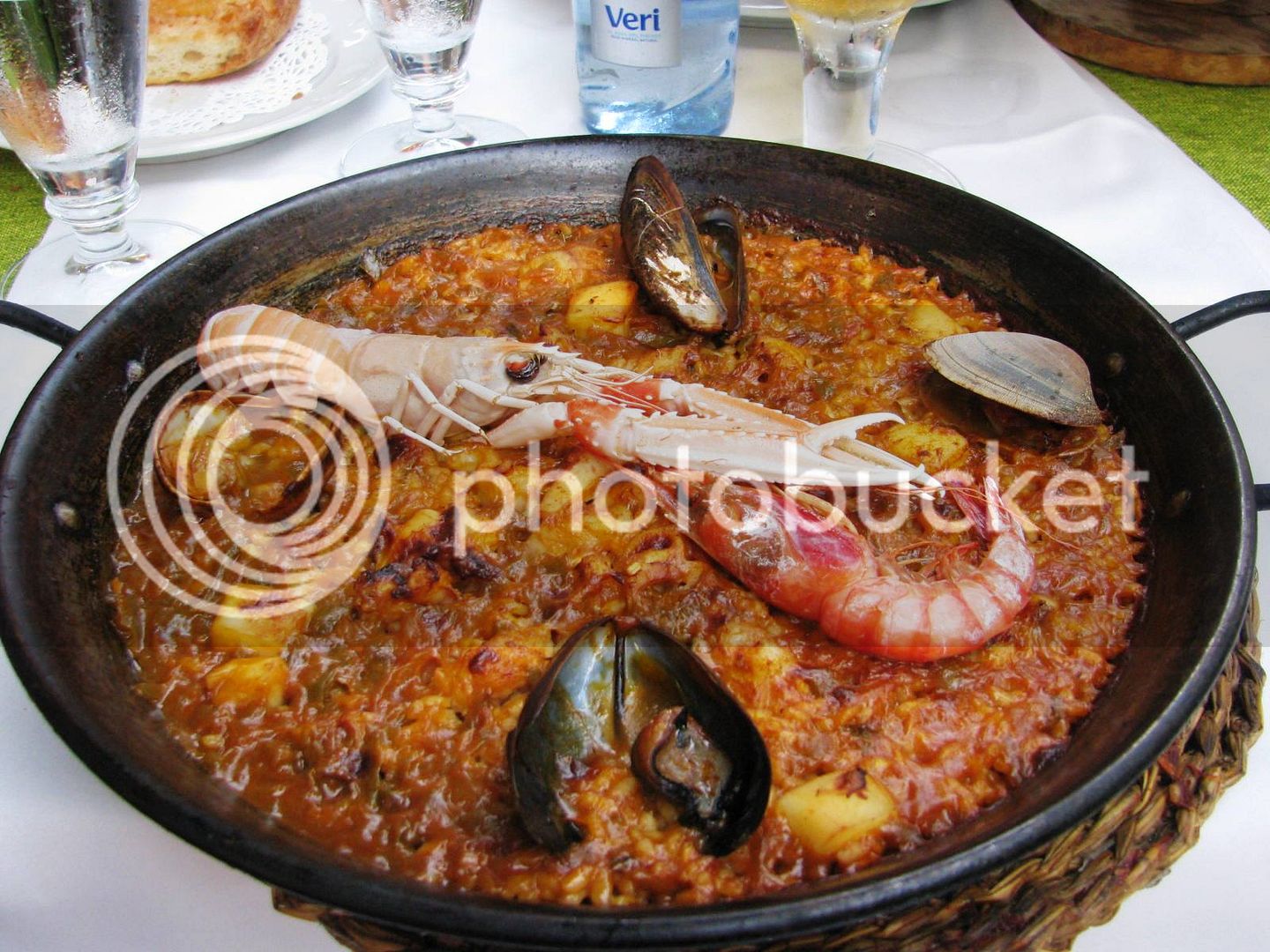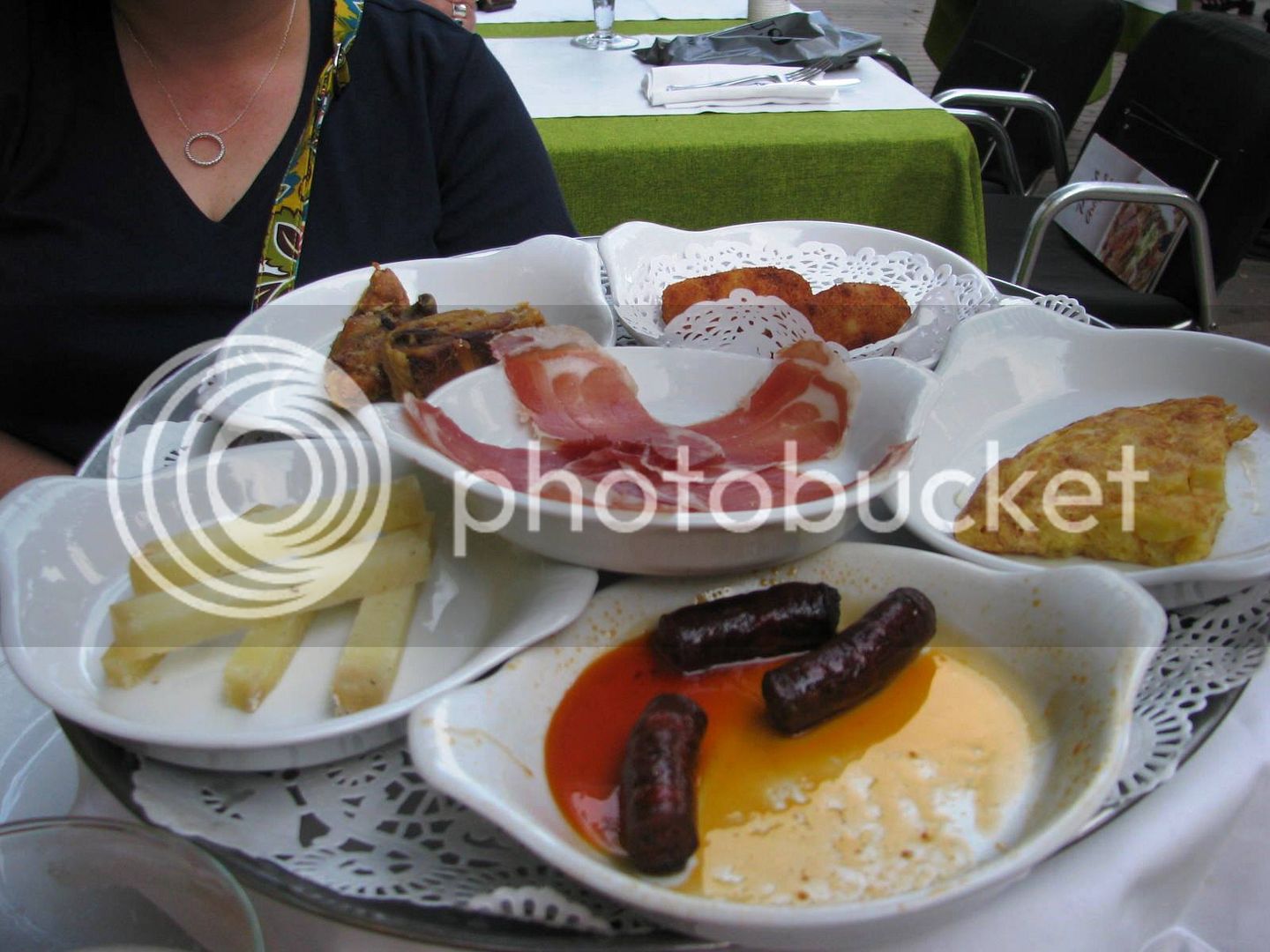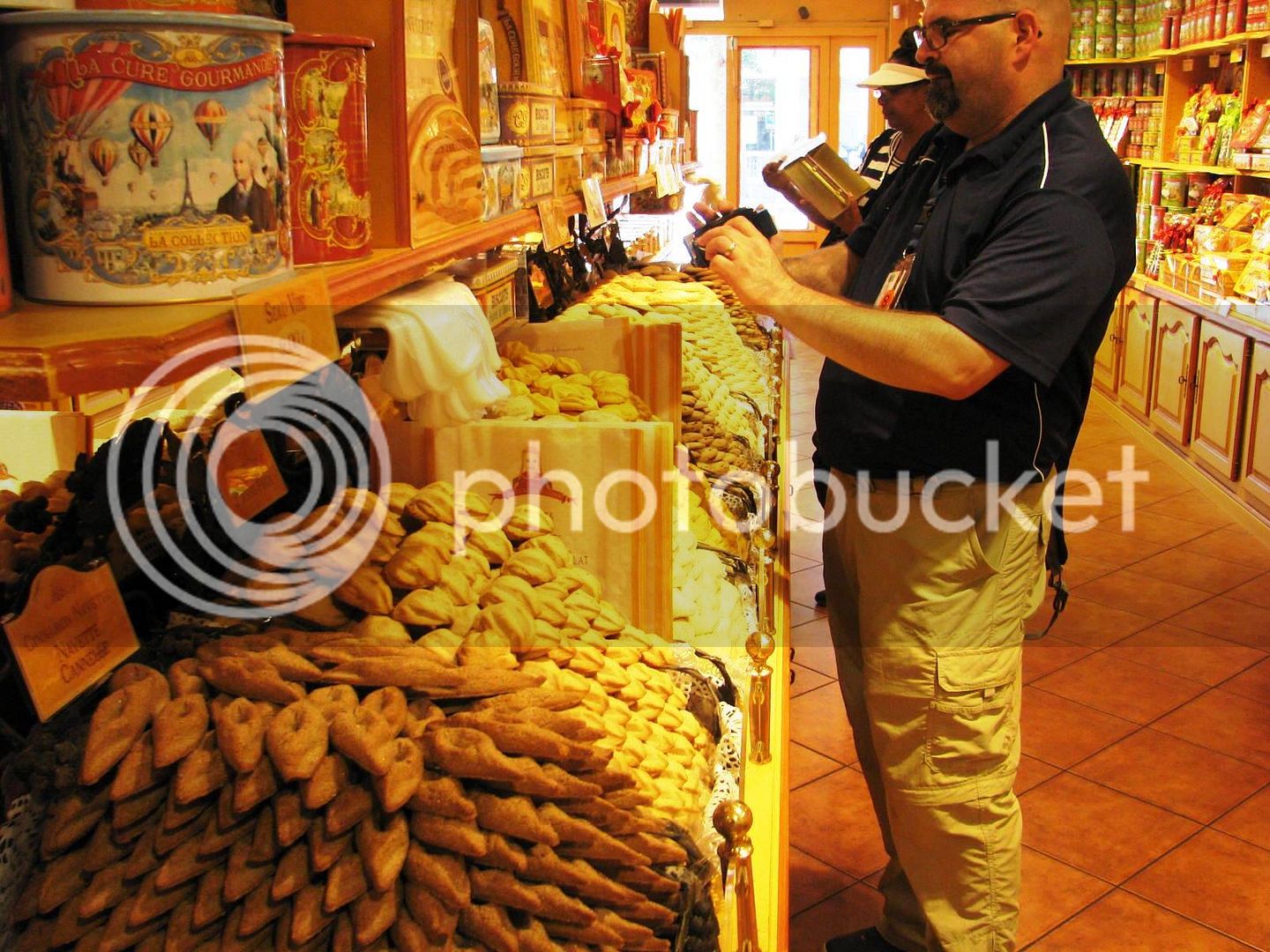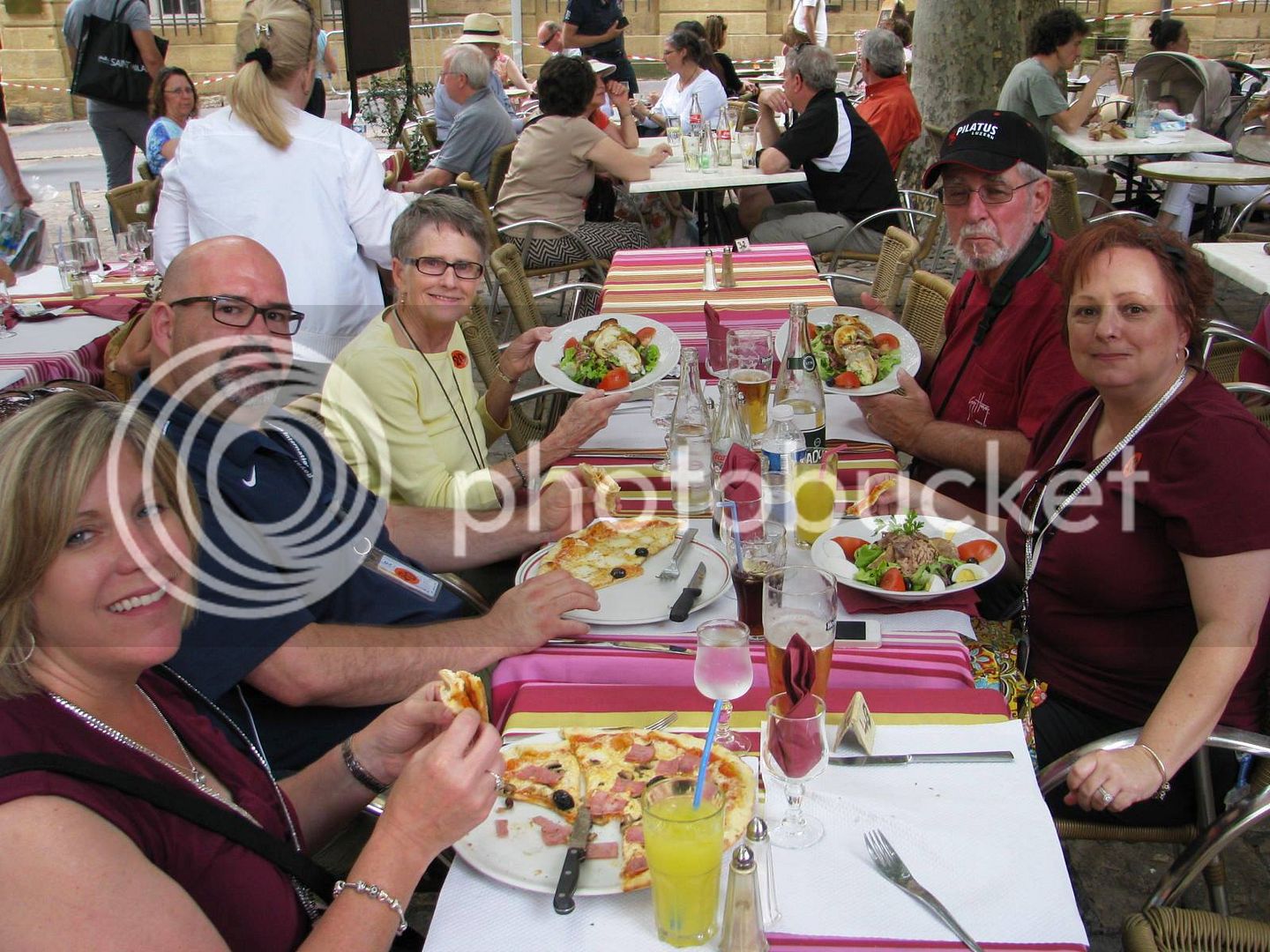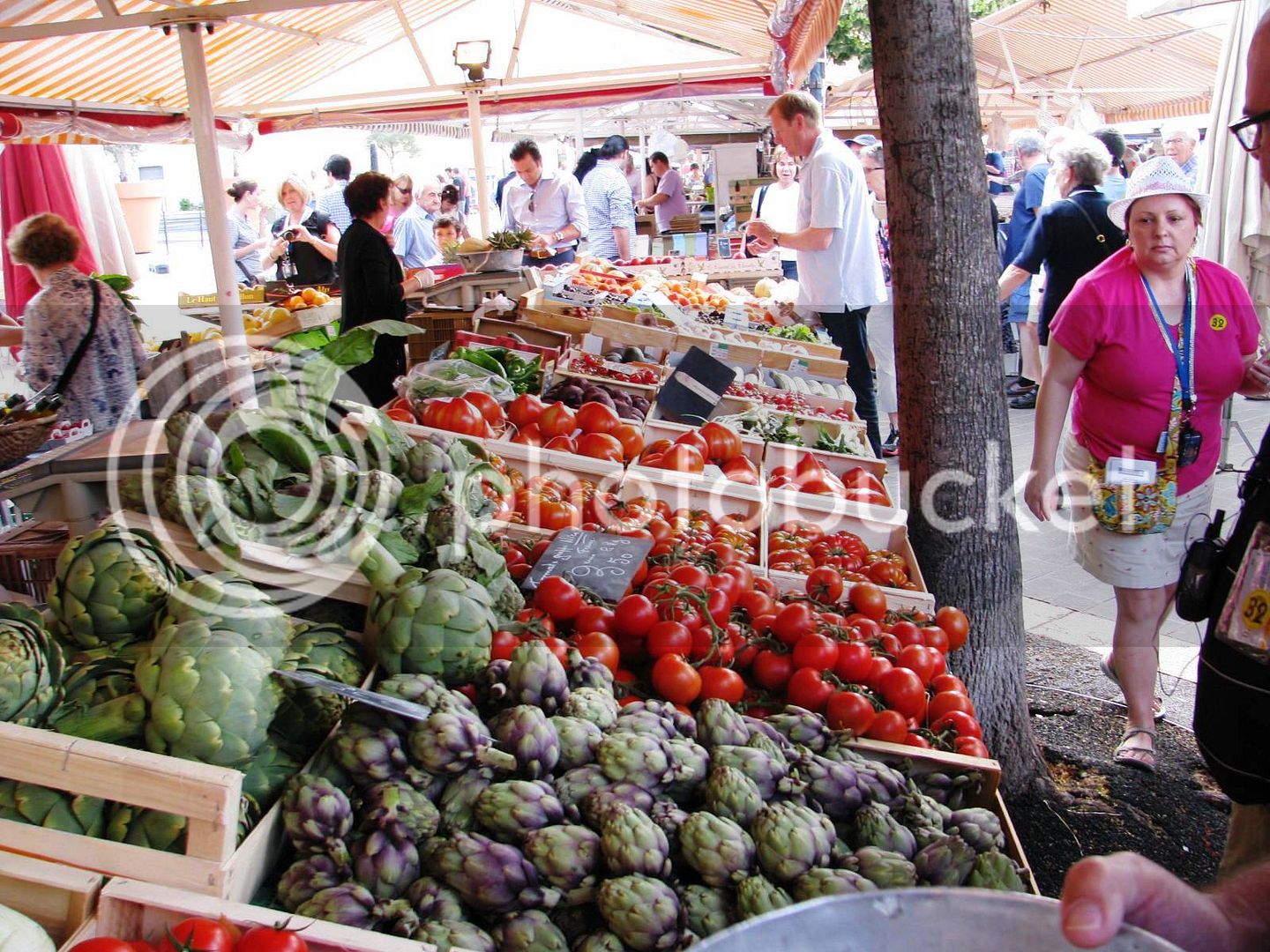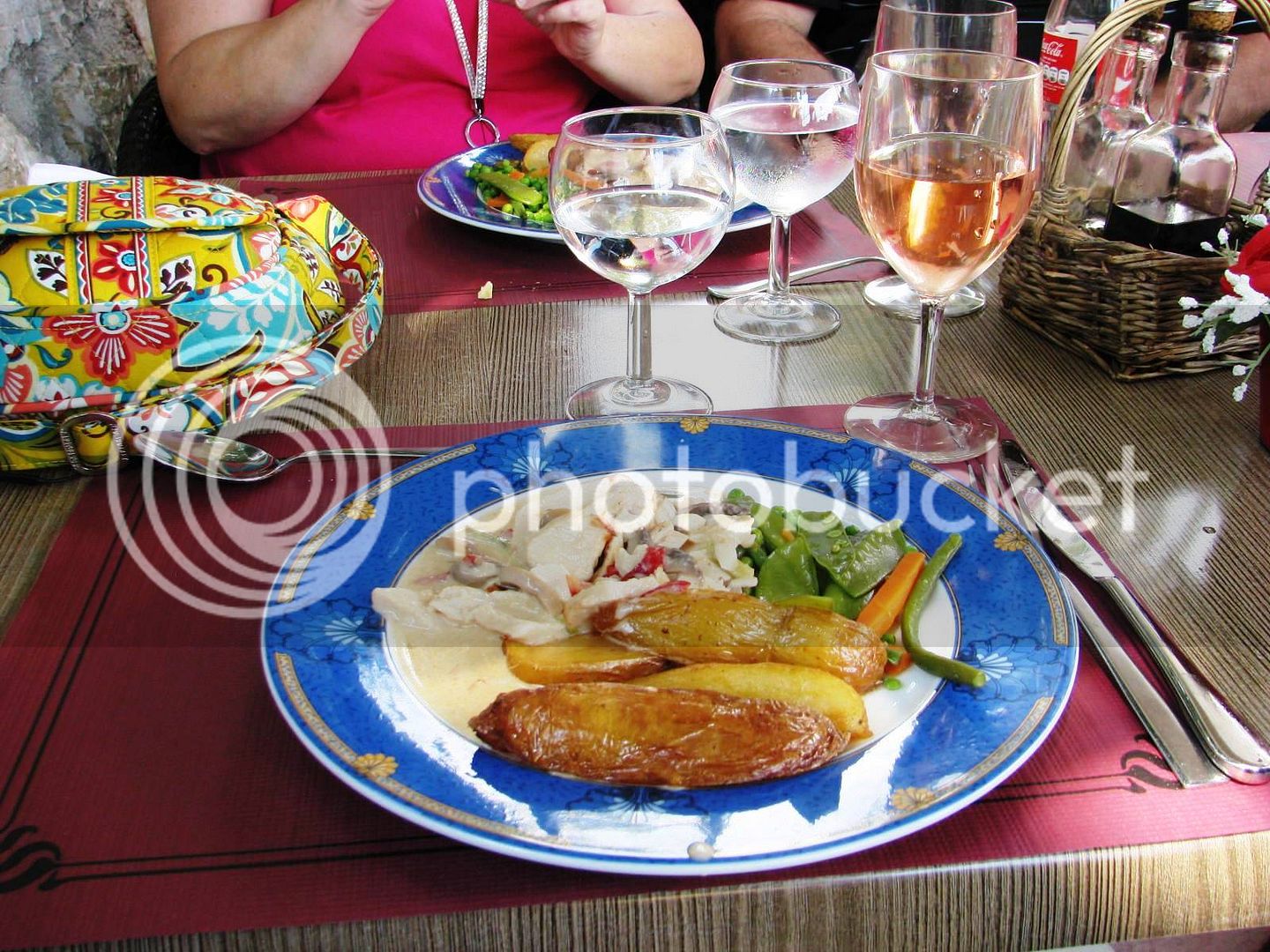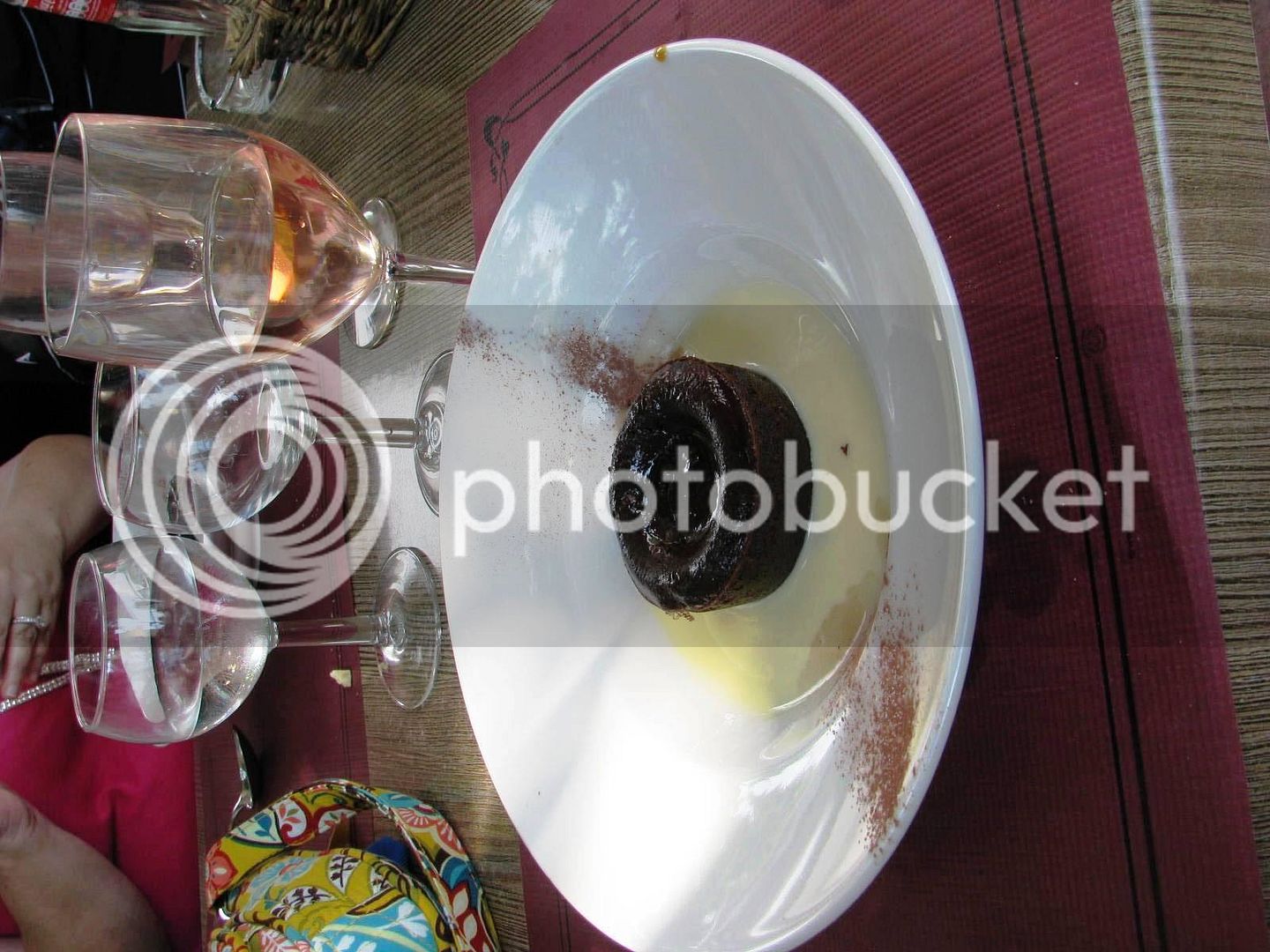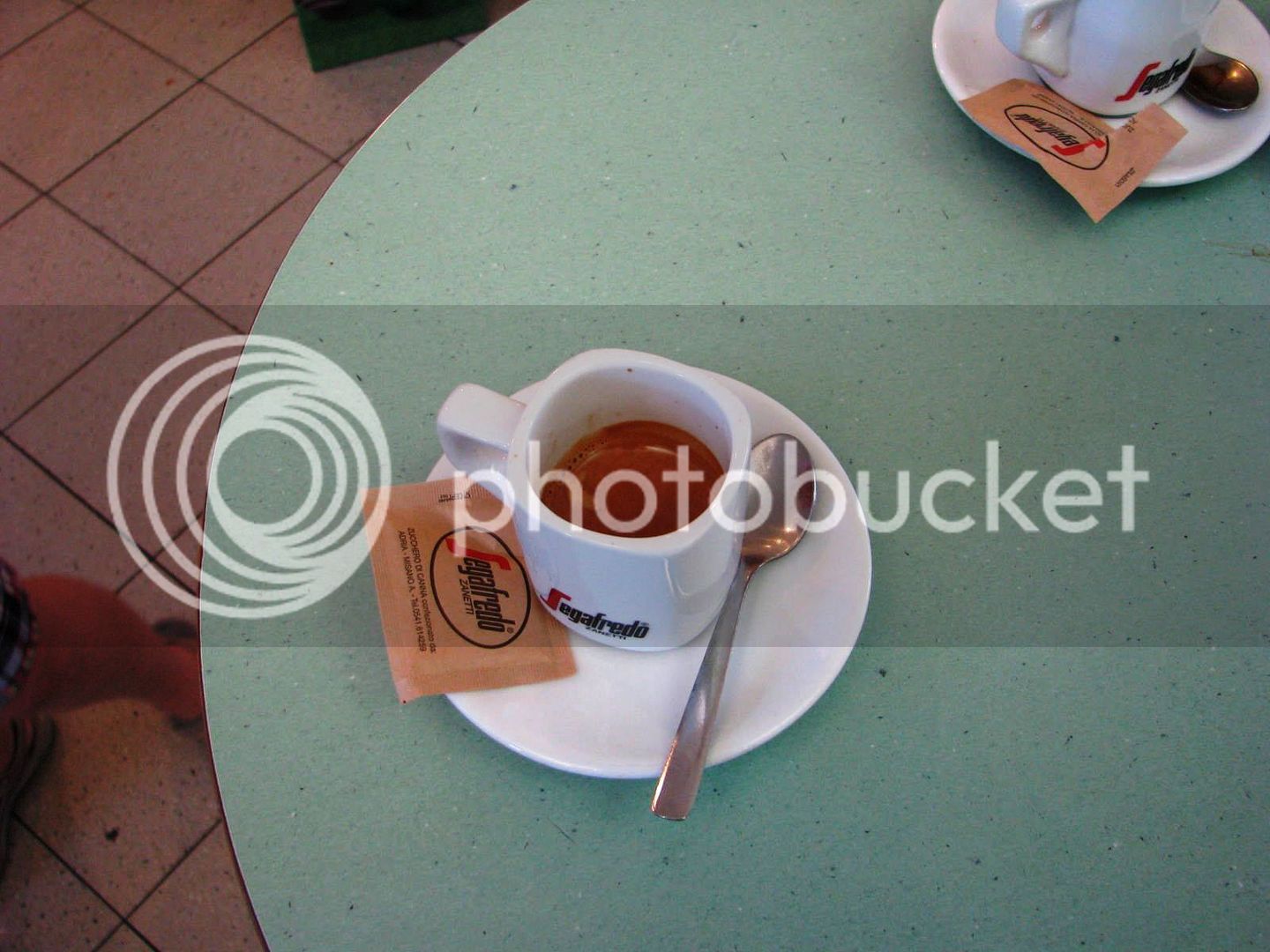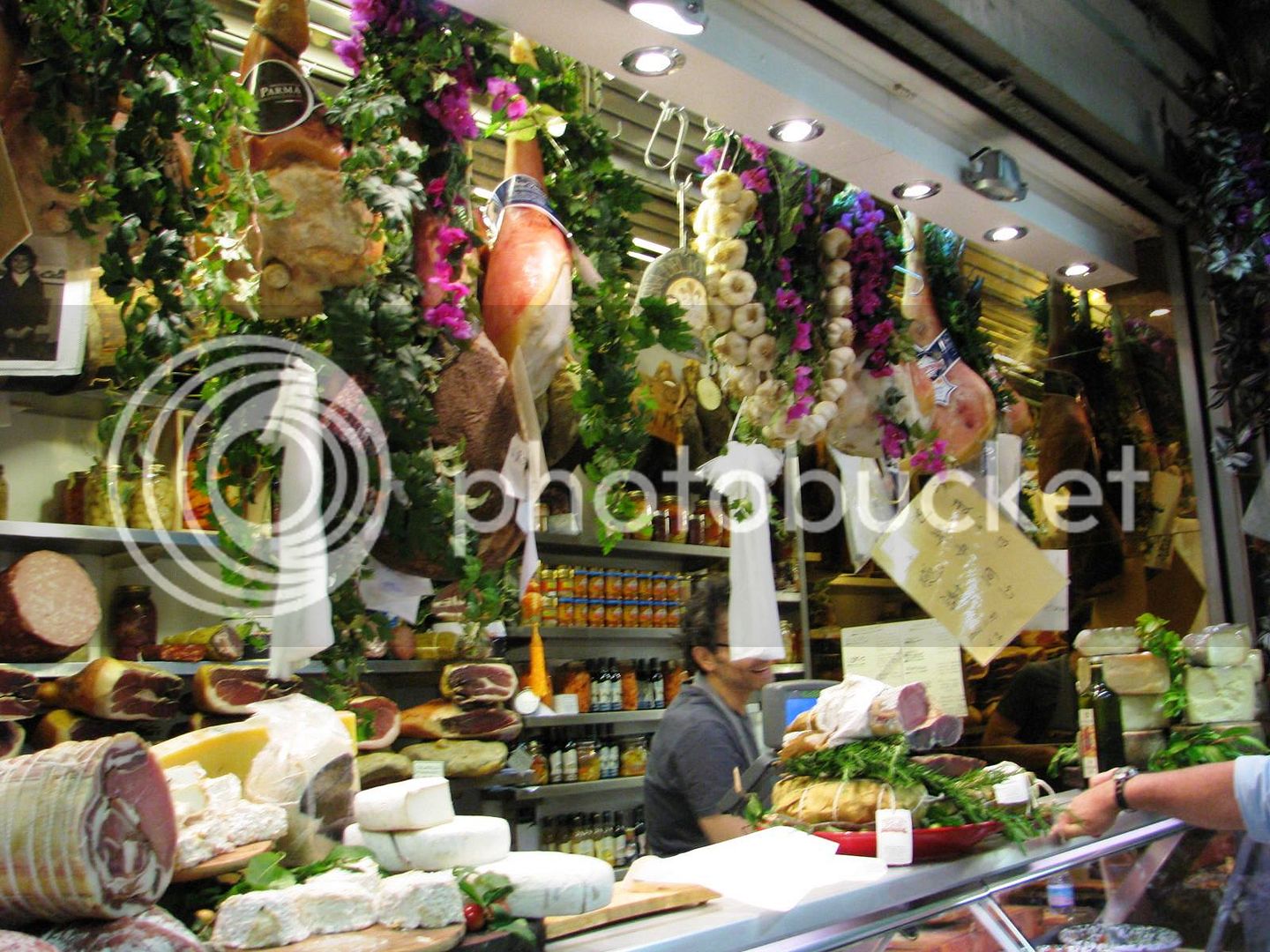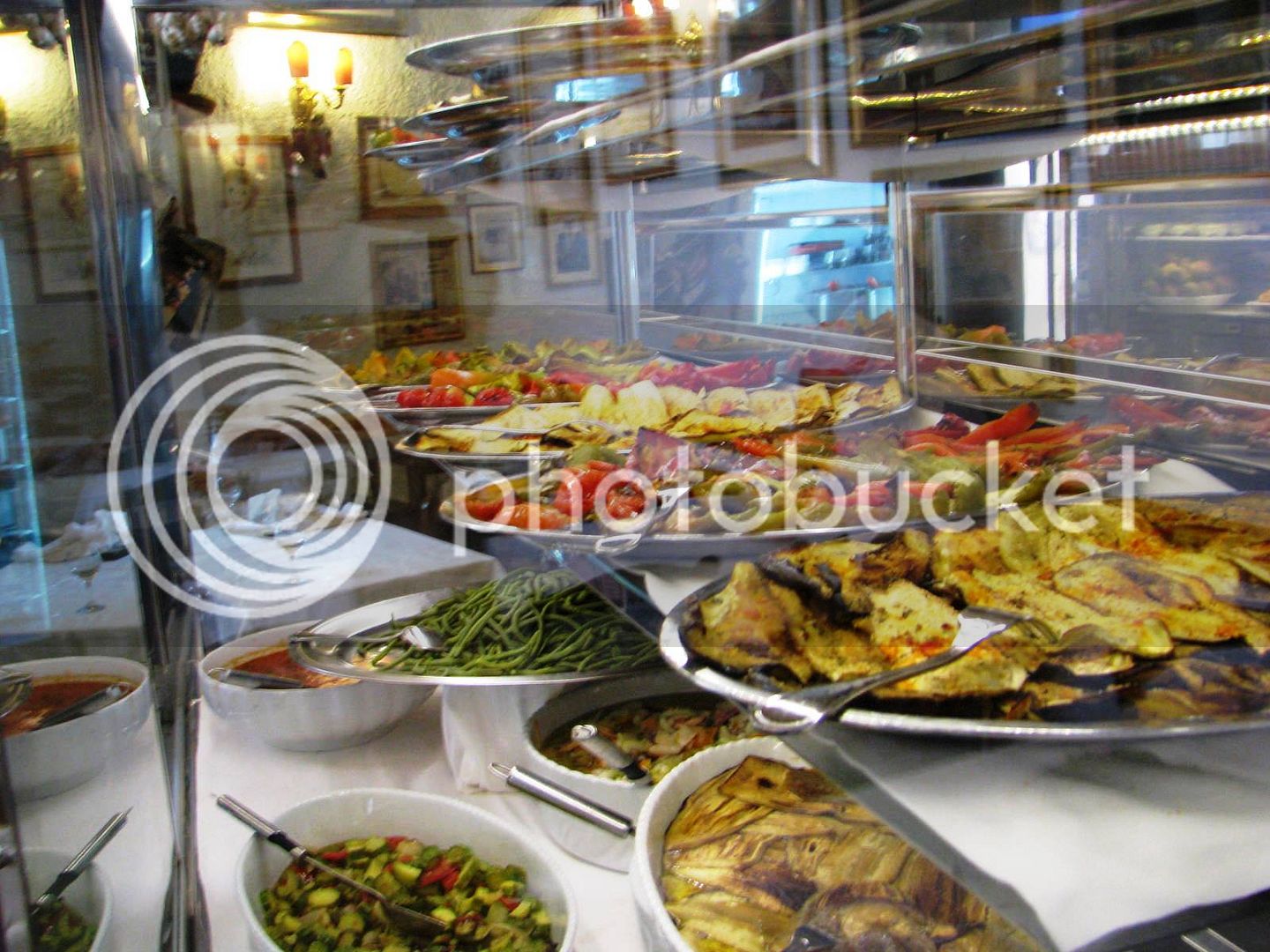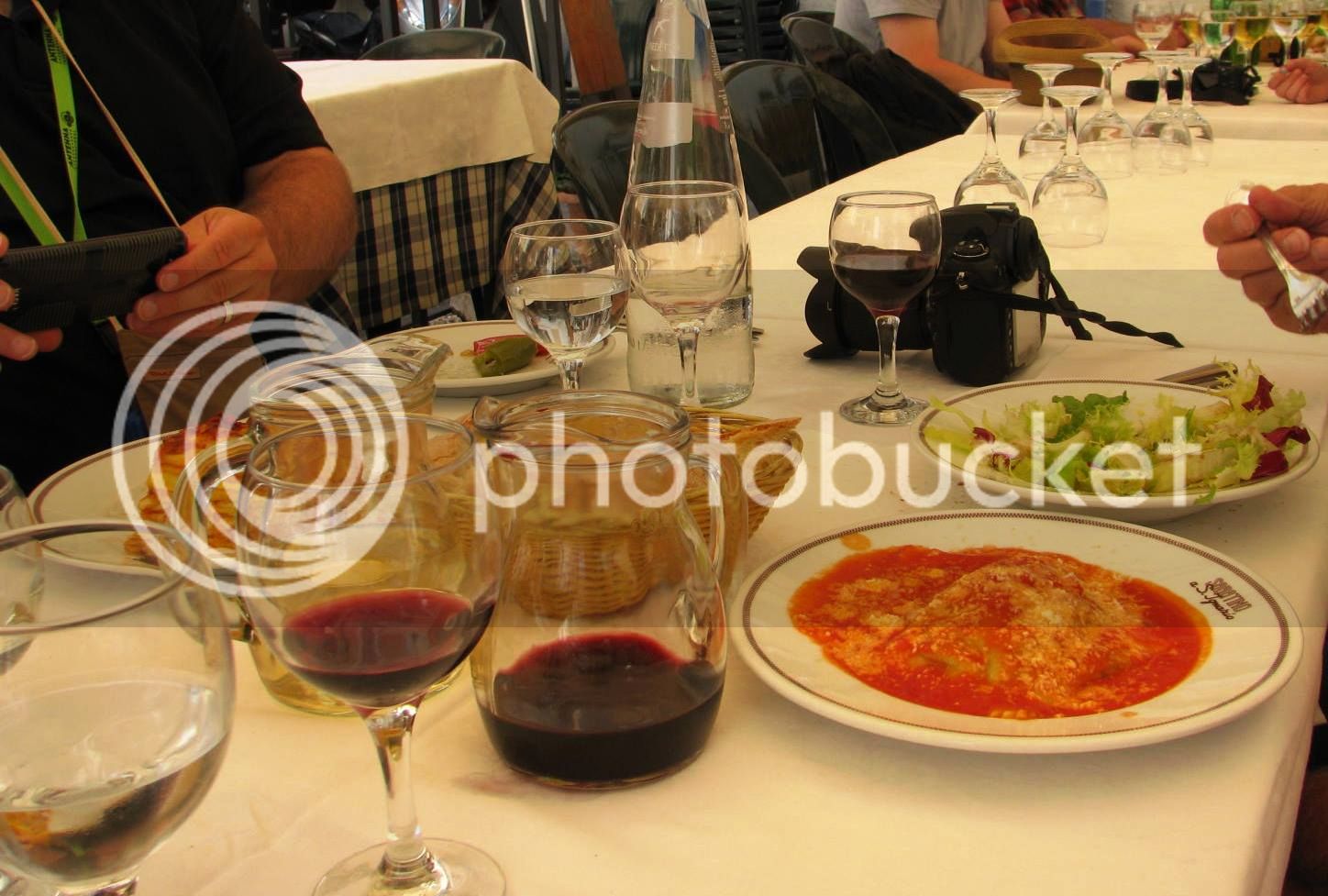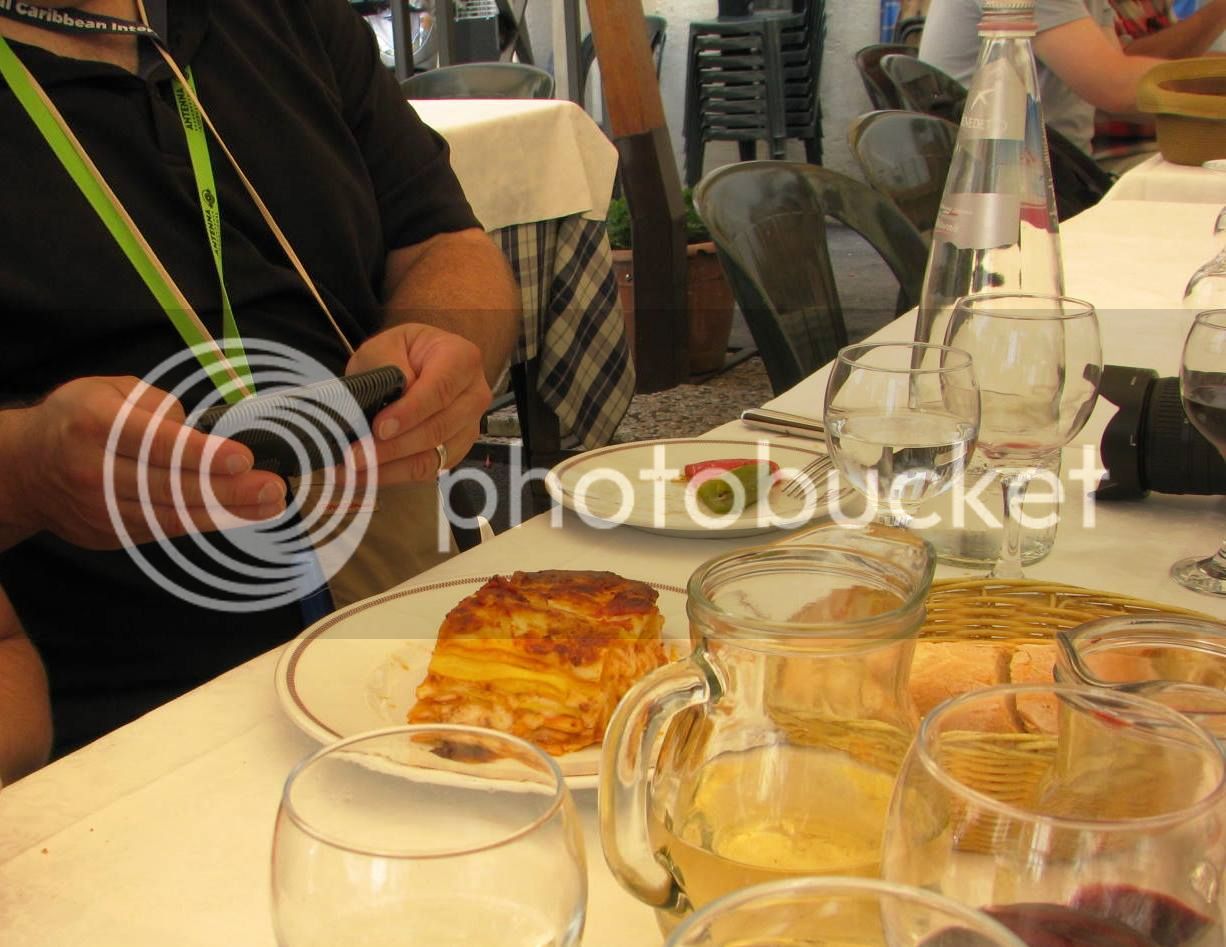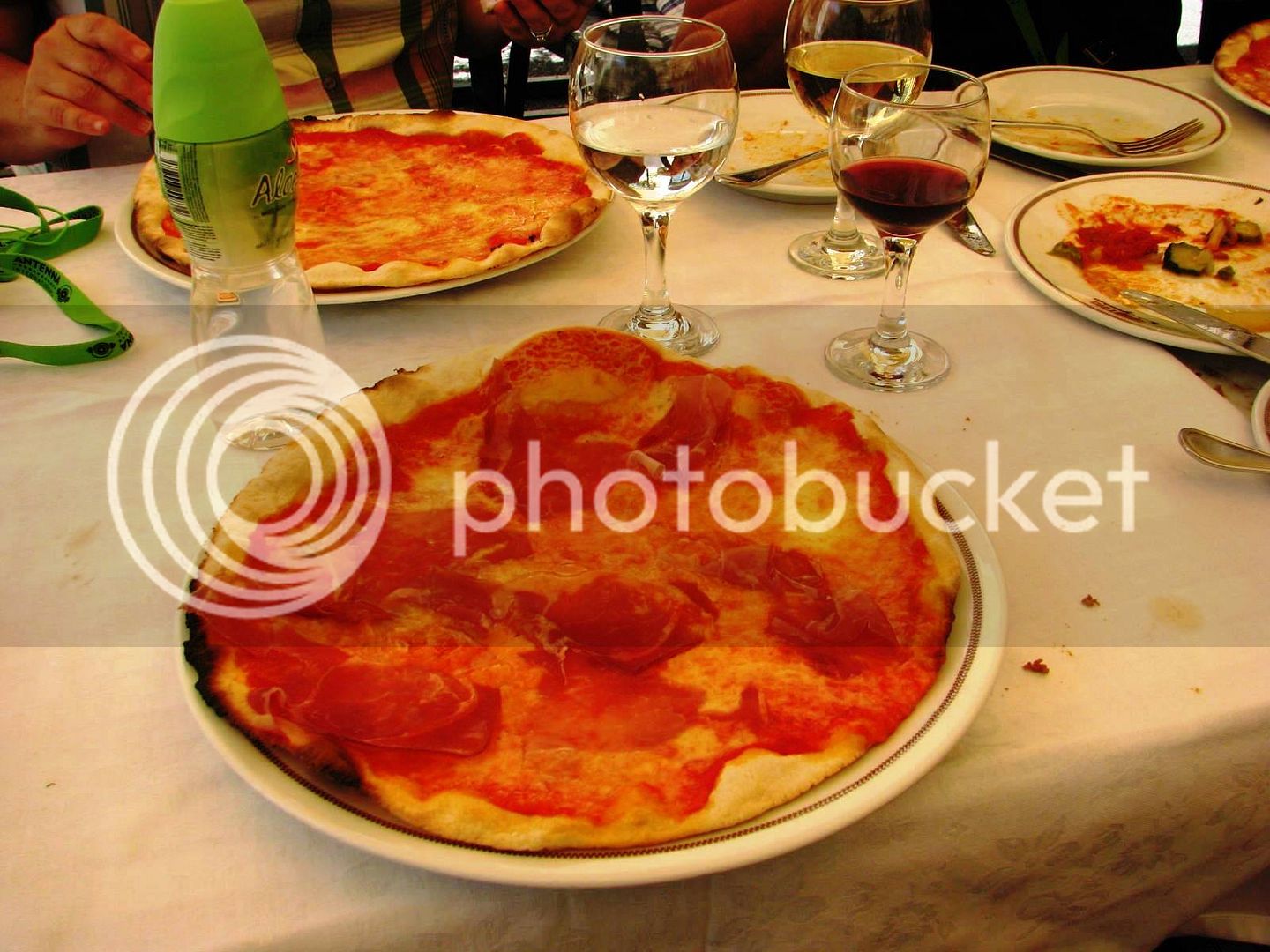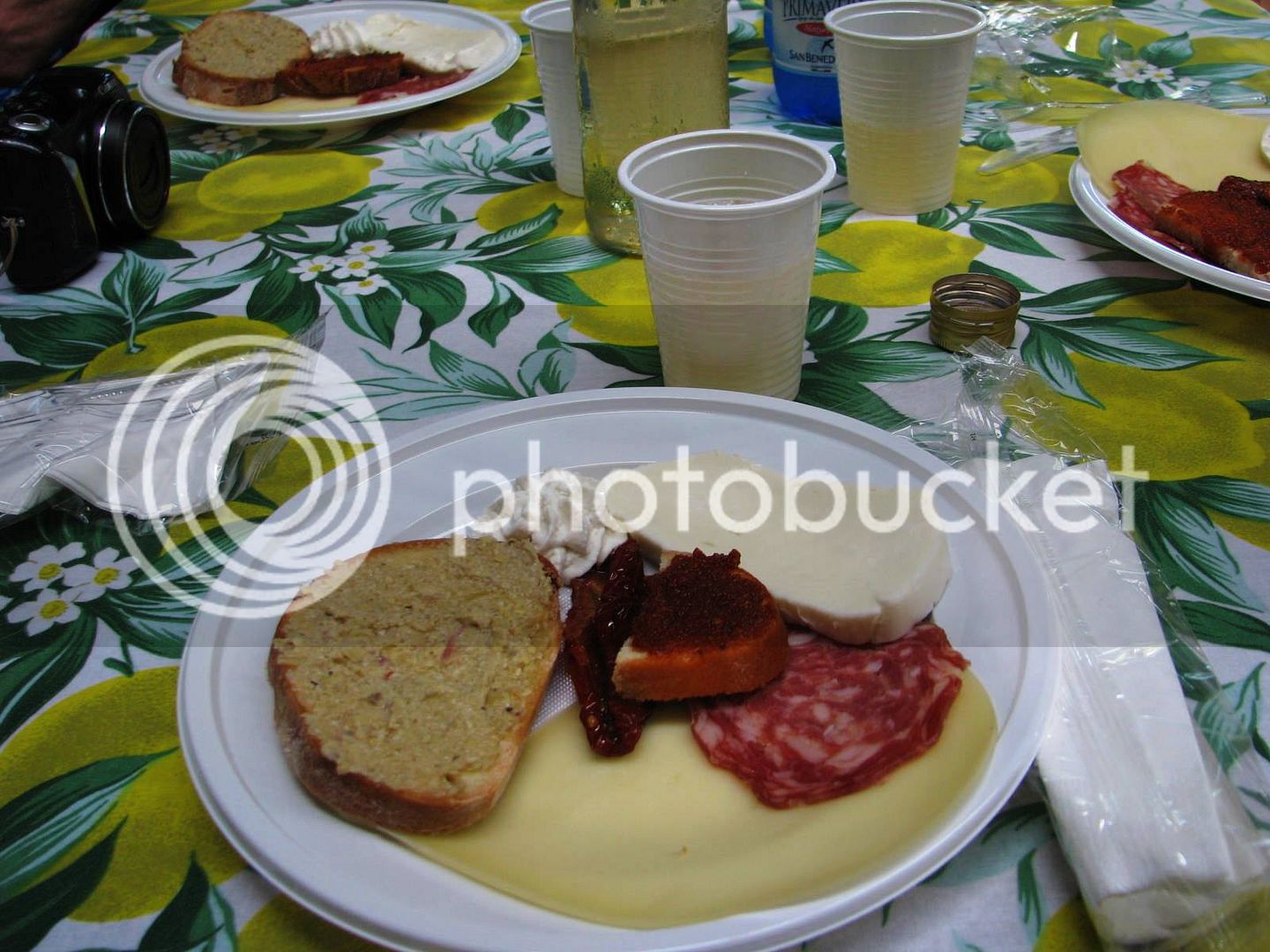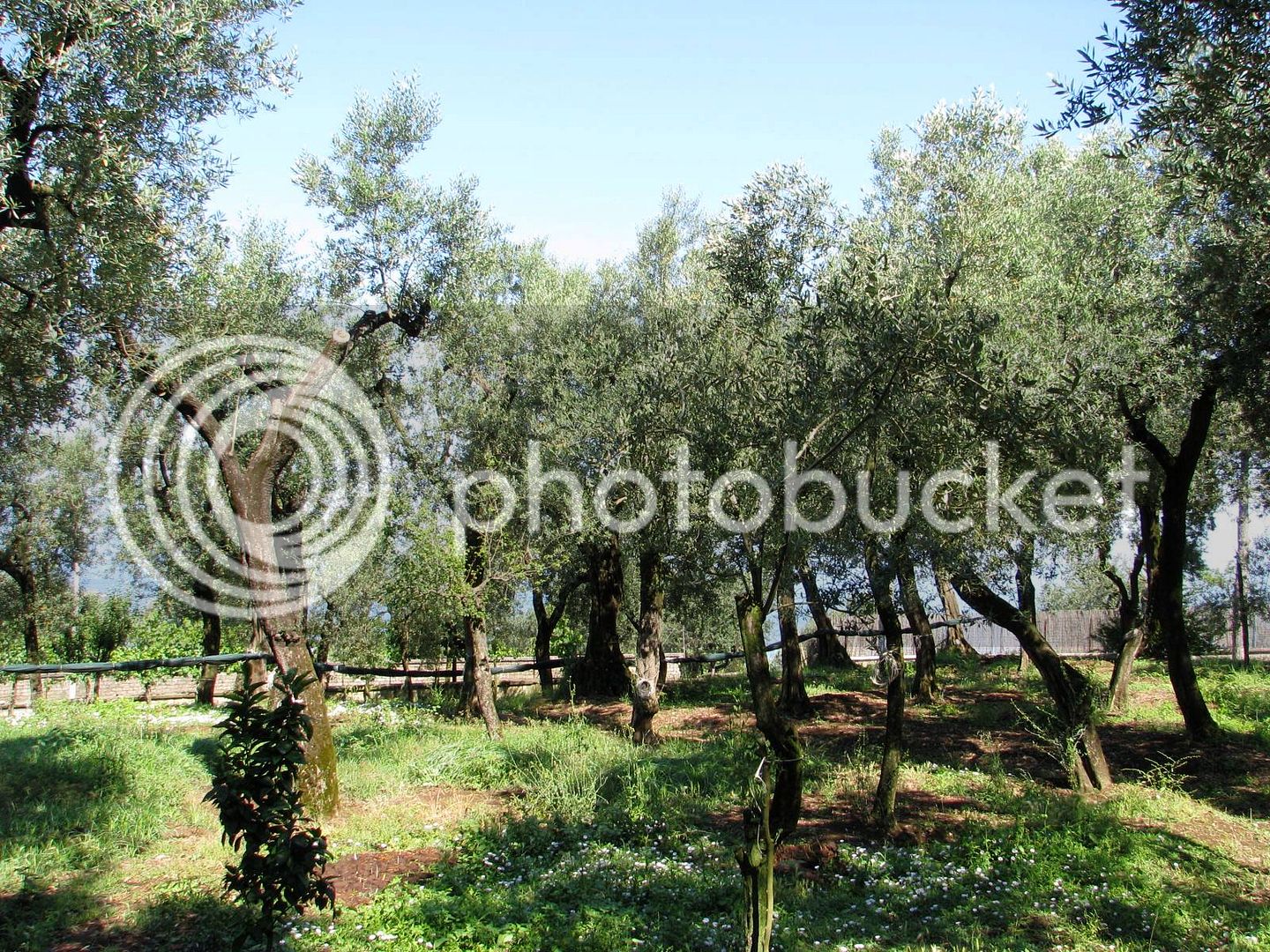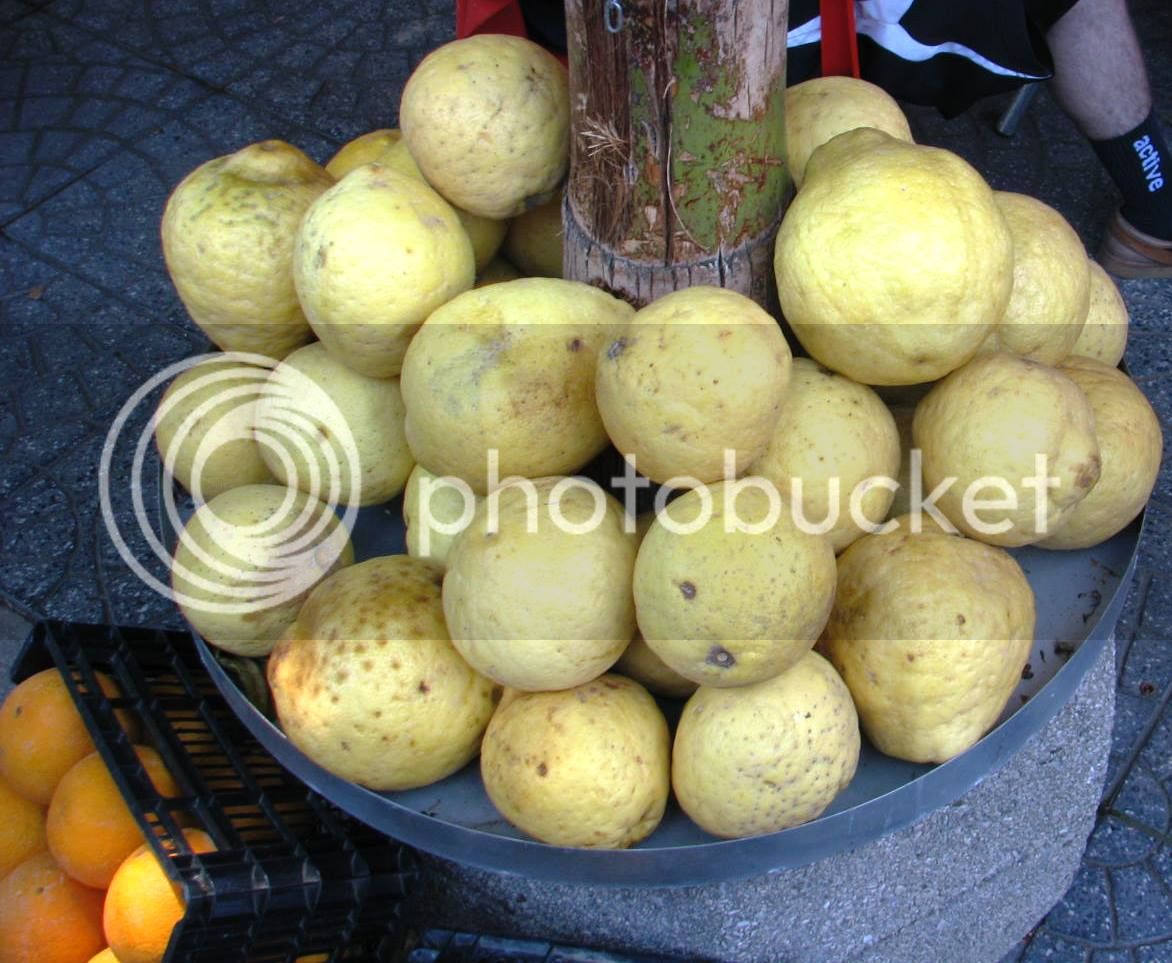hppants
Well-known member
I just returned from 12 days in Europe with my family. It was my first trip there, and of course, I enjoyed every minute of it. We traveled to Barcelona, Spain, Marseilles, Provence in France, Monaco and Monte Carlo, Florence, Rome, Sorrento, and Pompeii, Italy, and even spent 1 afternoon in Vatican City.
Motorcycles in Europe are a world different from the United States. Fuel is EXTREMELY expensive. Converted to American dollars, gasoline varied in price from a low of about $7.00 per gallon in Barcelona to a high of almost $11.00 per gallon in the South of Italy. Because of this, small bikes (less than 500 cc) are much more prevalent and scooters are hugely popular. The vast majority of the bikes have some kind of wind screen and a hard top box installed. 2-up riding is as normal as solo-riding. All of the places I visited have helmet laws, but otherwise, like the States, the vast majority of the riders don’t wear any other protective gear.
Overwhelmingly, most bikes are Japanese. Ironically, perhaps only 2-3 percent were Italian (of those mostly Ducati) or English (all Triumph) bikes. There were a few Chinese and Korean scooters, and I saw only 3 Harley Davidsons the entire trip – each one was being saddled by a Pirate, presumably playing the part.
Couple of other “traffic” observations - First, everyone uses turn signals religiously. Overall, both bikers and cages seem to accelerate and brake a bit harder than we do. Not surprisingly, the French tend to ride/drive a bit slower. Equally predictably, ALL Italians regard the speed limit as a mere suggestion. Europeans use painted road markings more effectively – these are easier to spot and read than a sign lost on the side of the road.
Regardless, there are similarities between us. I had an opportunity to talk with several European bikers and they were just as eager to learn about my experiences as I was there’s. Most of them are full timers – using the bike for commuting and as primary transportation. But the love of riding is still there – and I know that our brotherhood (and sisterhood) is world wide.
Lane splitting on a motorcycle is lawful everywhere in Europe and observing it from a distance gave me quite a pucker at times. Bikers over there are zipping in and out of traffic, taking huge chances that 4-wheeled motorists will see them and yield when necessary. Funny thing is – it clearly works. I never saw 1 motor vehicle accident the whole time. 4-wheeled motorists seem to respect the bikers and actively look for them in all driving situations.
I took a few pictures to share with you.
Once again, any bike over 500 cc in Spain is extremely rare (perhaps less than 2%), but when one is found, it’s usually a BMW adventure bike.
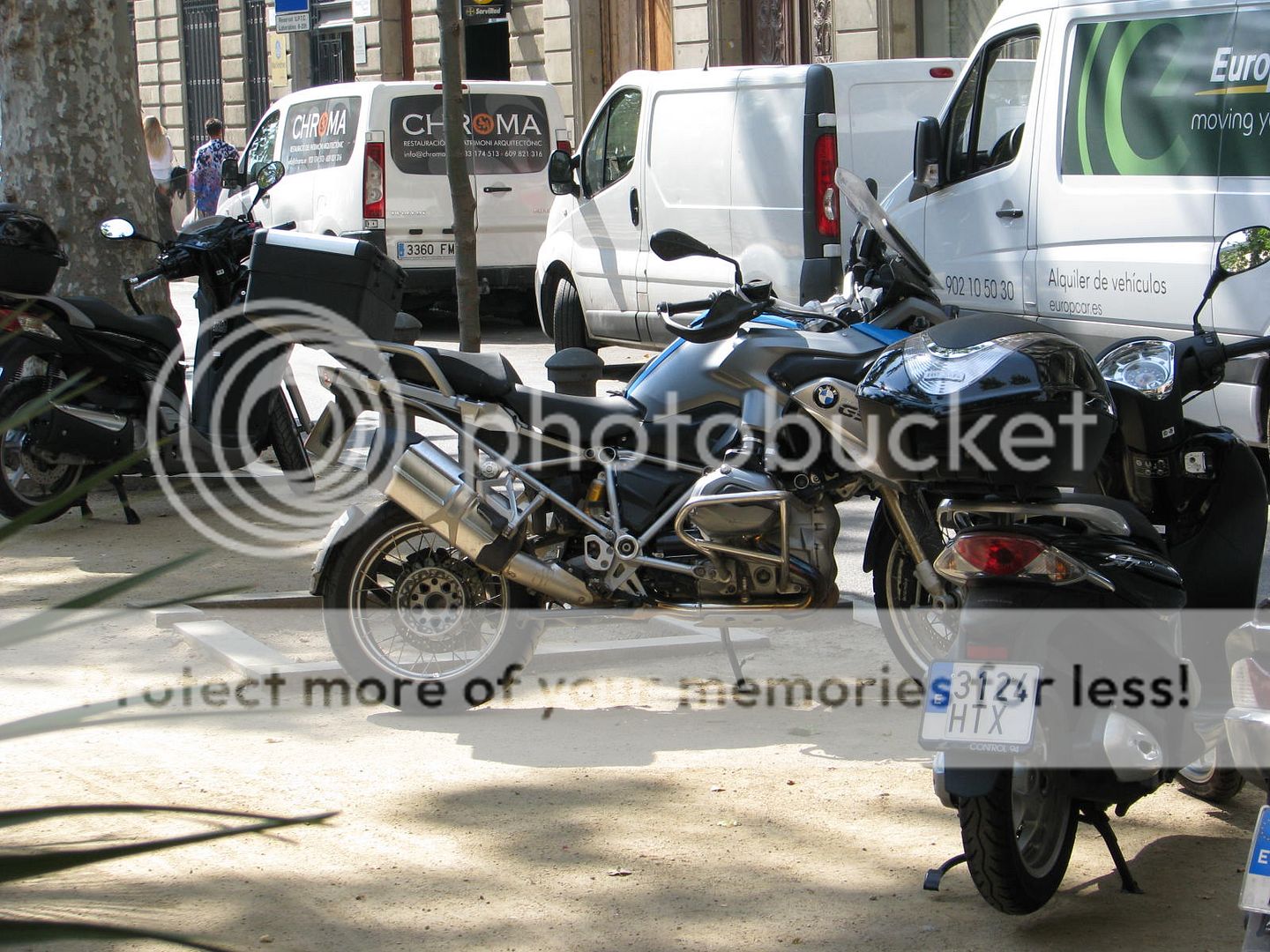
In Italy, larger bikes are more prevalent. The aftermarket cans on this Duc’ sounded heavenly – I heard him coming from 3 blocks away and I suspect that he wants it that way.
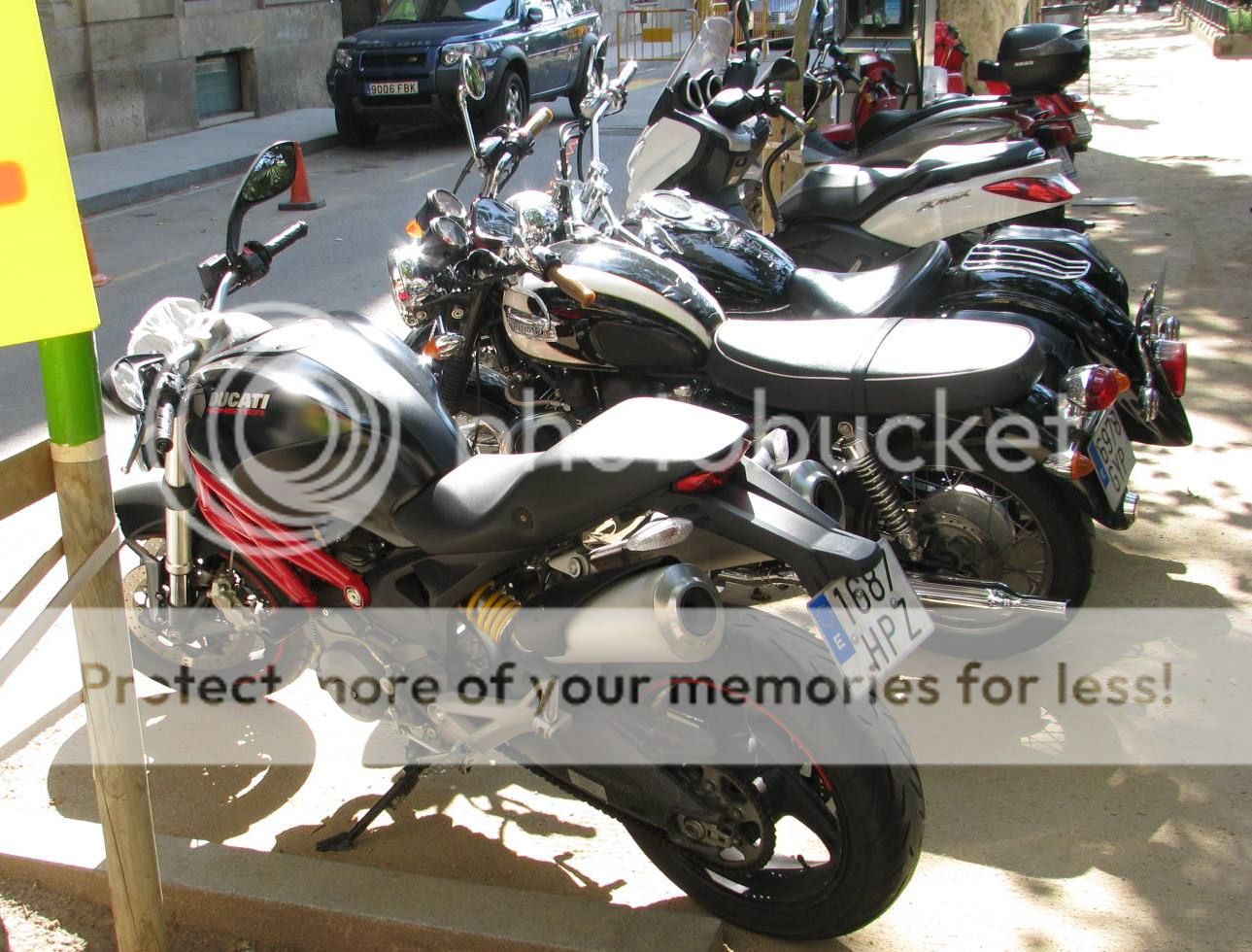
However, this has got to be the overwhelming favorite – a simple 125cc scooter with a small wind screen and a top box for utility. Note the handlebar lock – when you unlock it from the handlebars, it simply folds over under the seat. I thought that was interesting.
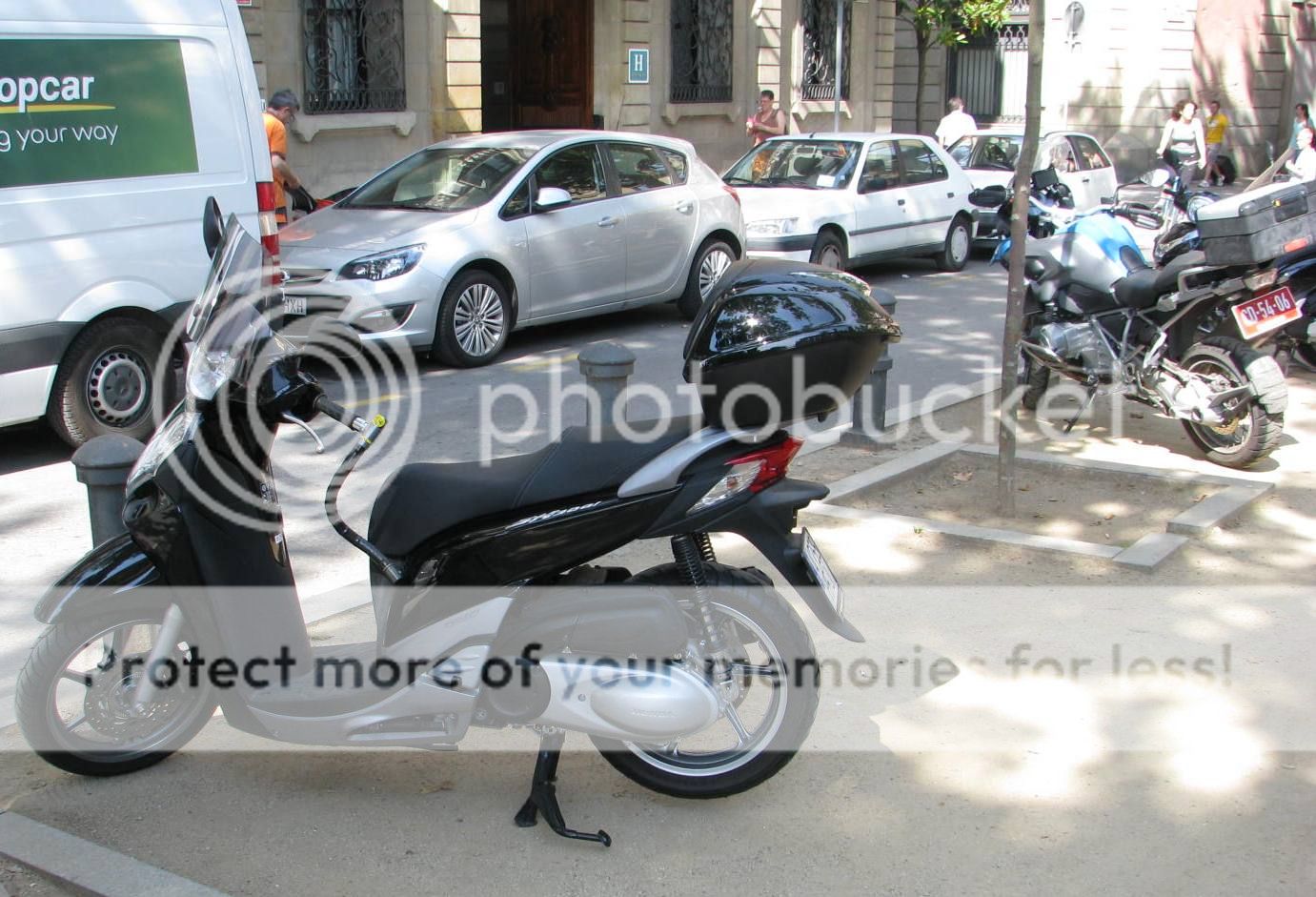
The Universal Japanese Motorcycle (UJM) is still very much alive and well in Europe. I found a pair of Yamaha Fazer’s in a square in Florence. It would appear that Yamaha has re-incarnated the Fazar name from the 80’s – USA line up.
600 cc, nice “bandit-like” ½ fairing, frame sliders, top box, a beautiful motorcycle. The blue one looks to be the same color as my ’05 FJR.
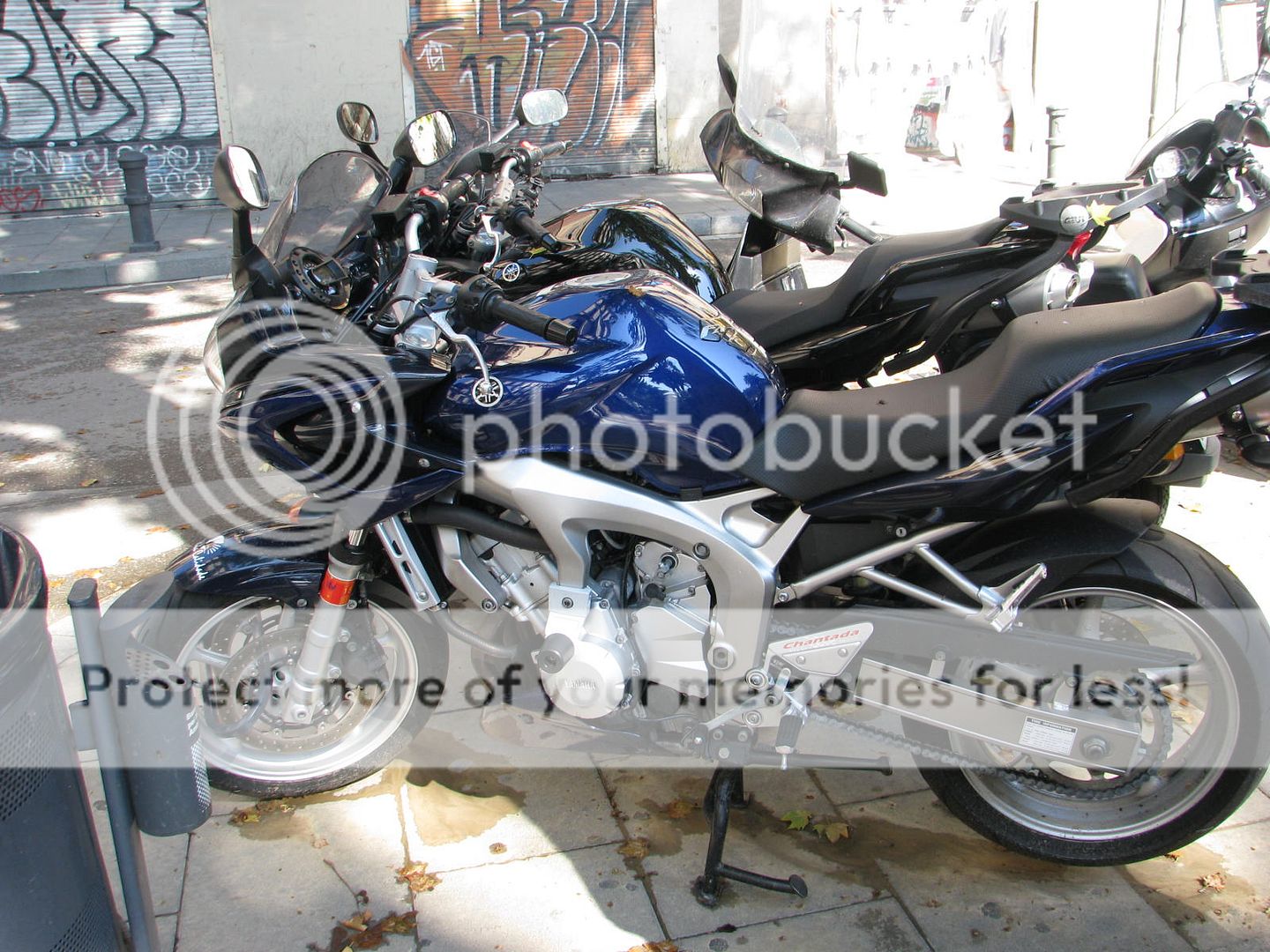

Stock exhaust runs under the seat on these.
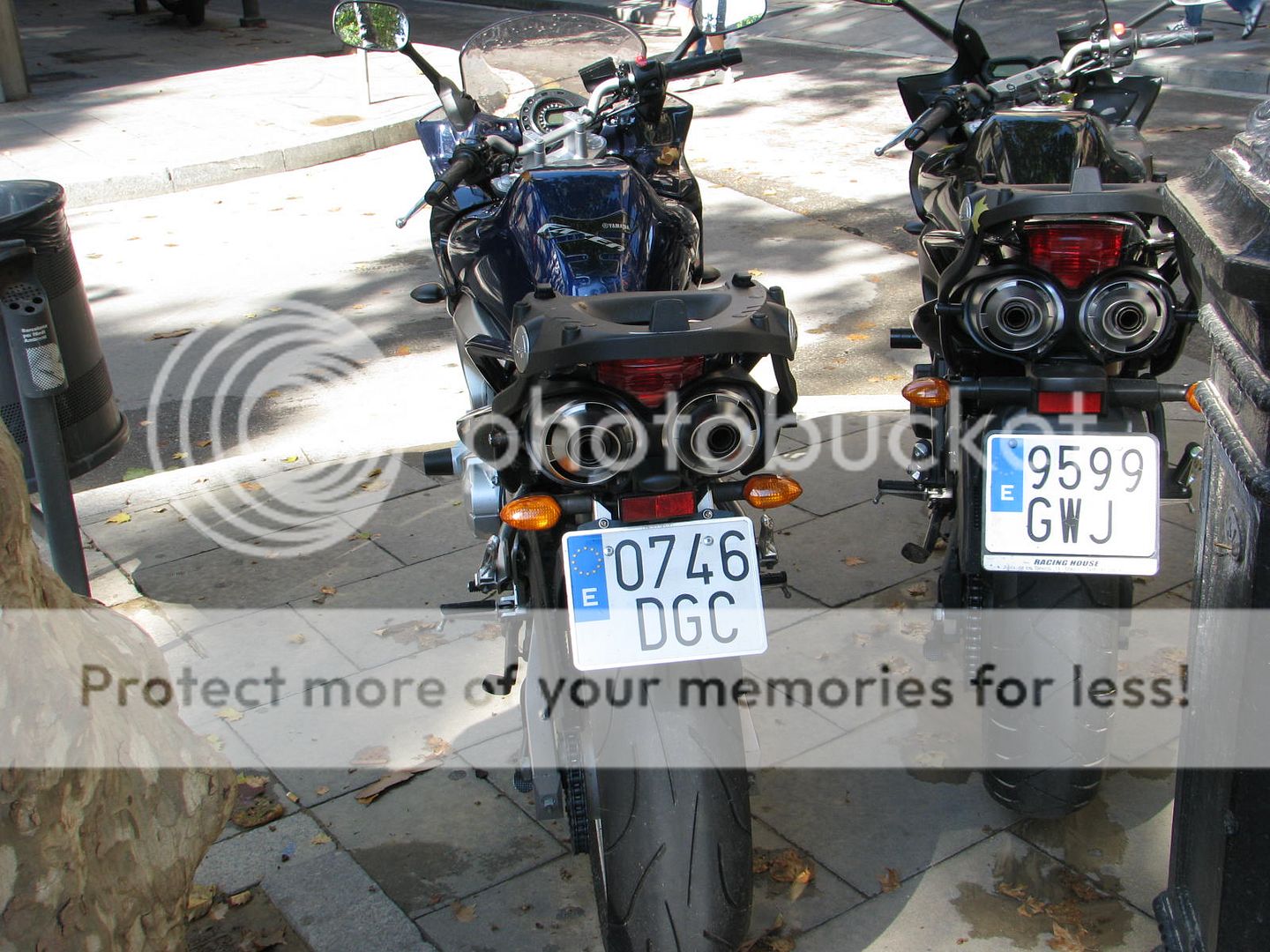
I found this GS in Rome while eating my lunch. The top box is home made and the owner was rightfully very proud of his workmanship.
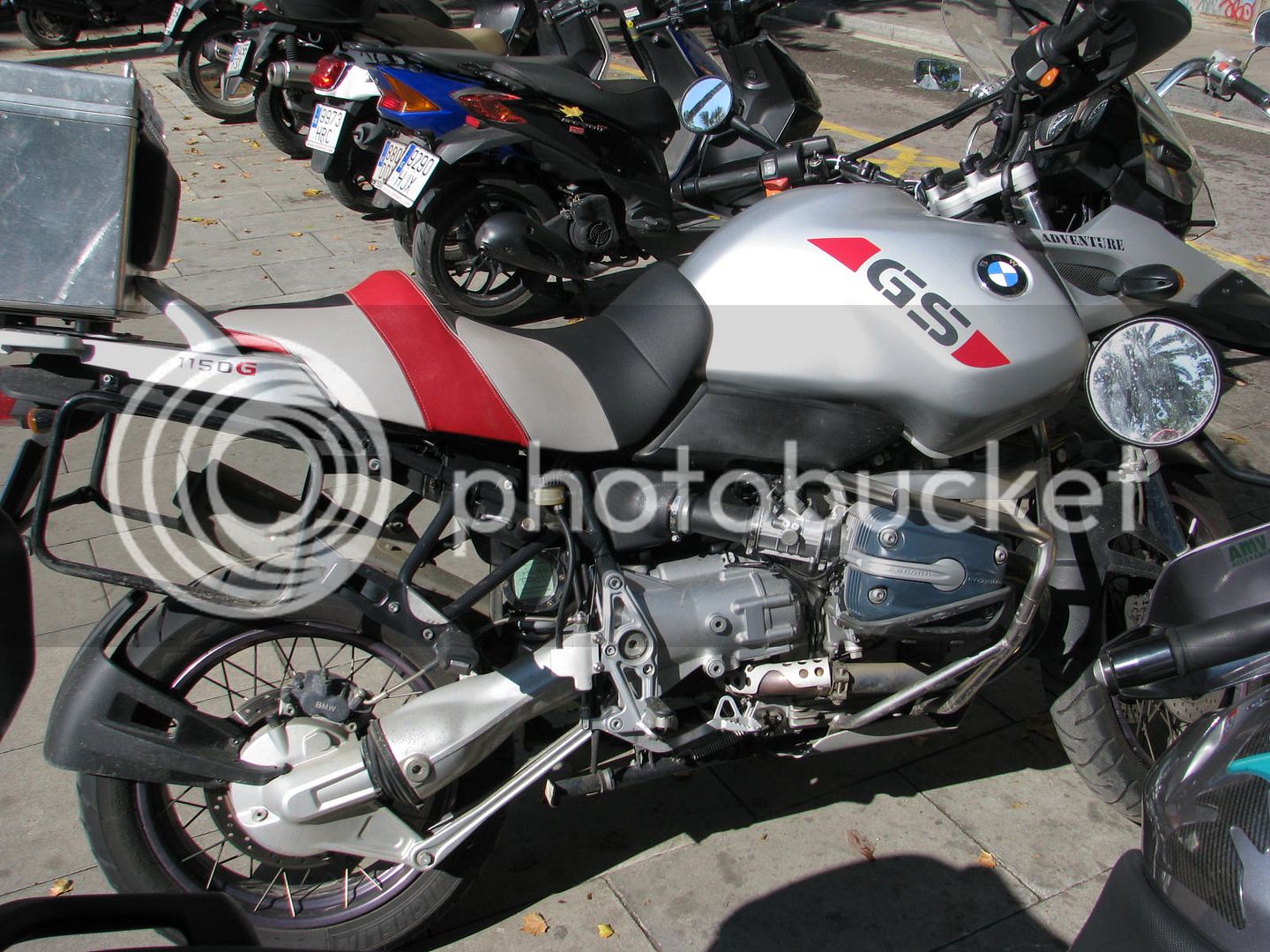
He turned his nose up on the Aprilla sitting next to him. I politely stayed neutral on the issue.
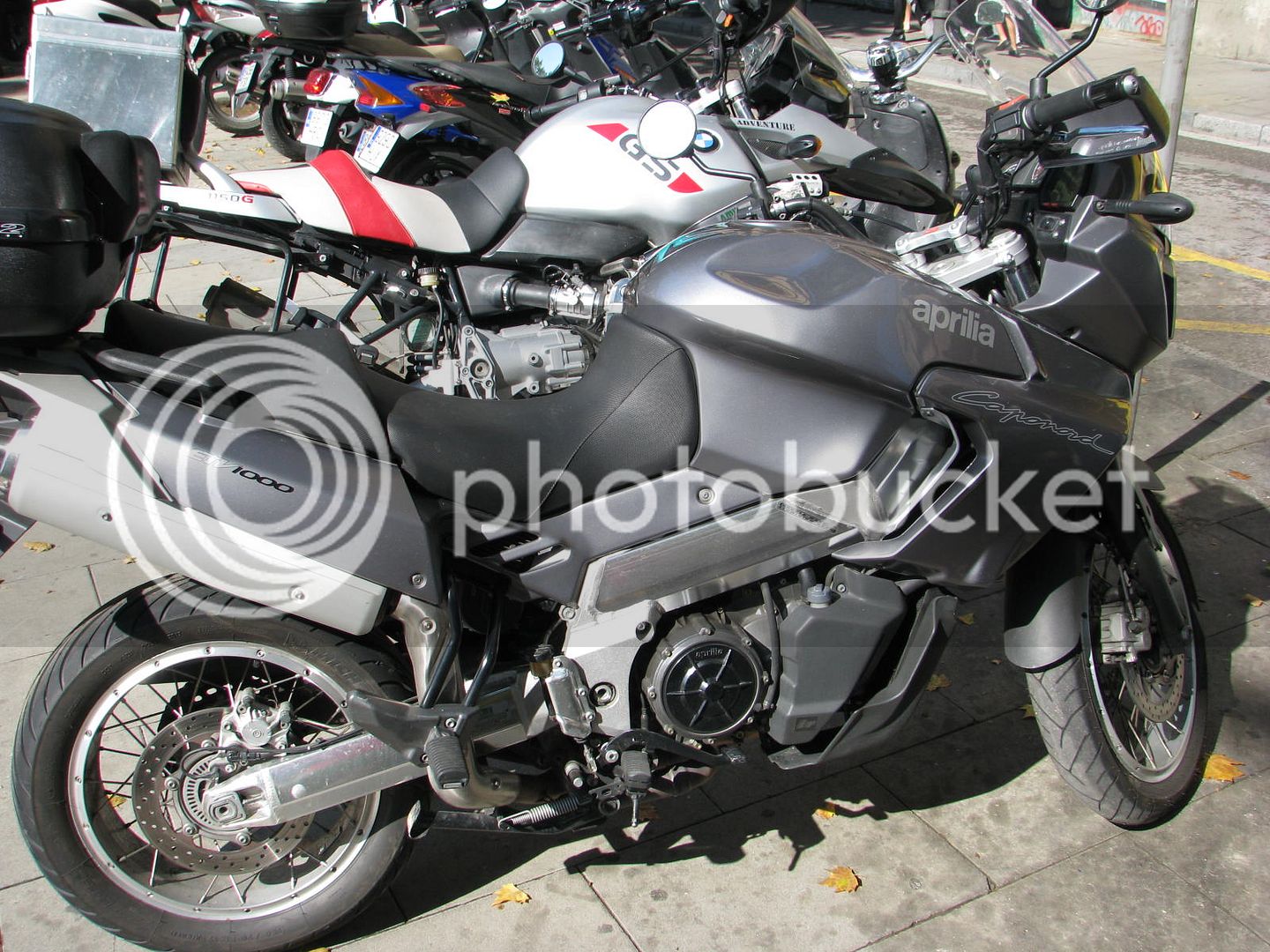
IIRC, the side of the engine on this Honda said “636 cc”, but I can’t determine if the engine comes from a Shadow cruiser, something else, or is purpose built for this bike.
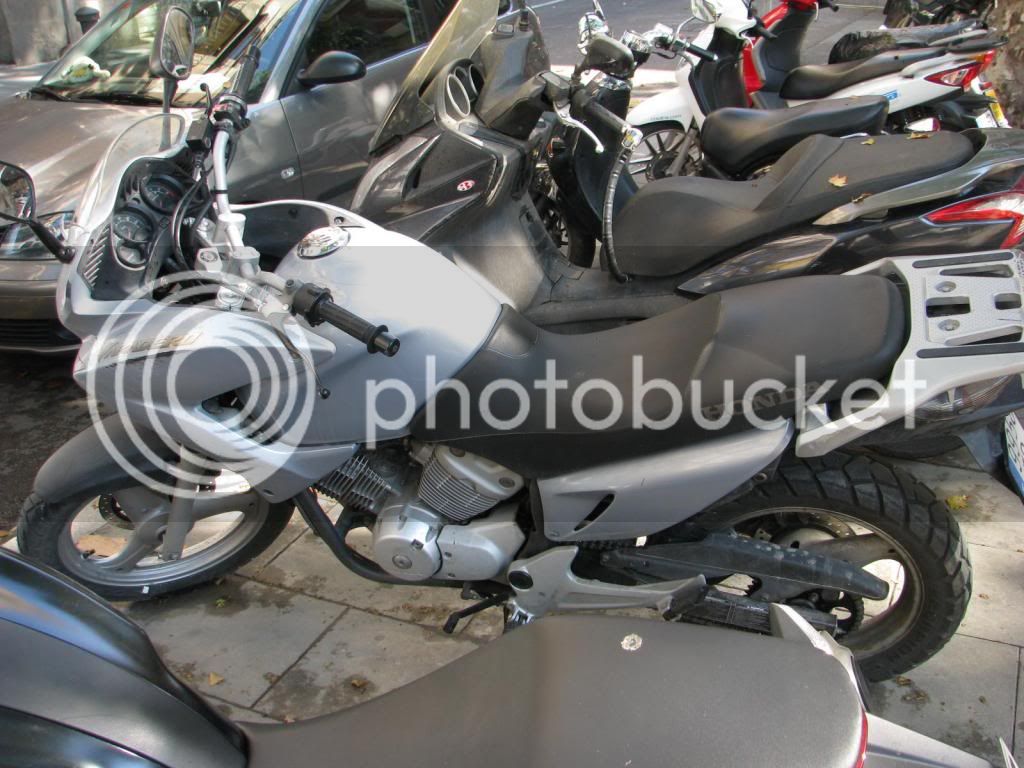
Loads of Honda CB250s throughout the big cities.

A well maintained Honda CB400 Four – that header is very rare.
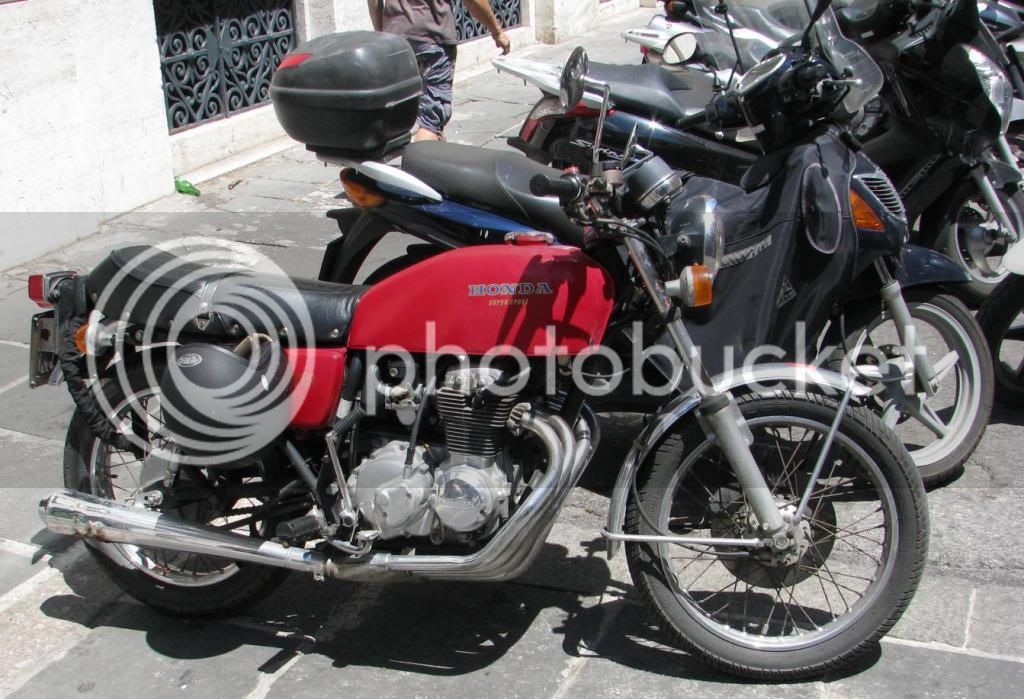
45 liter top box on this little scooter – that’s a lot of groceries!
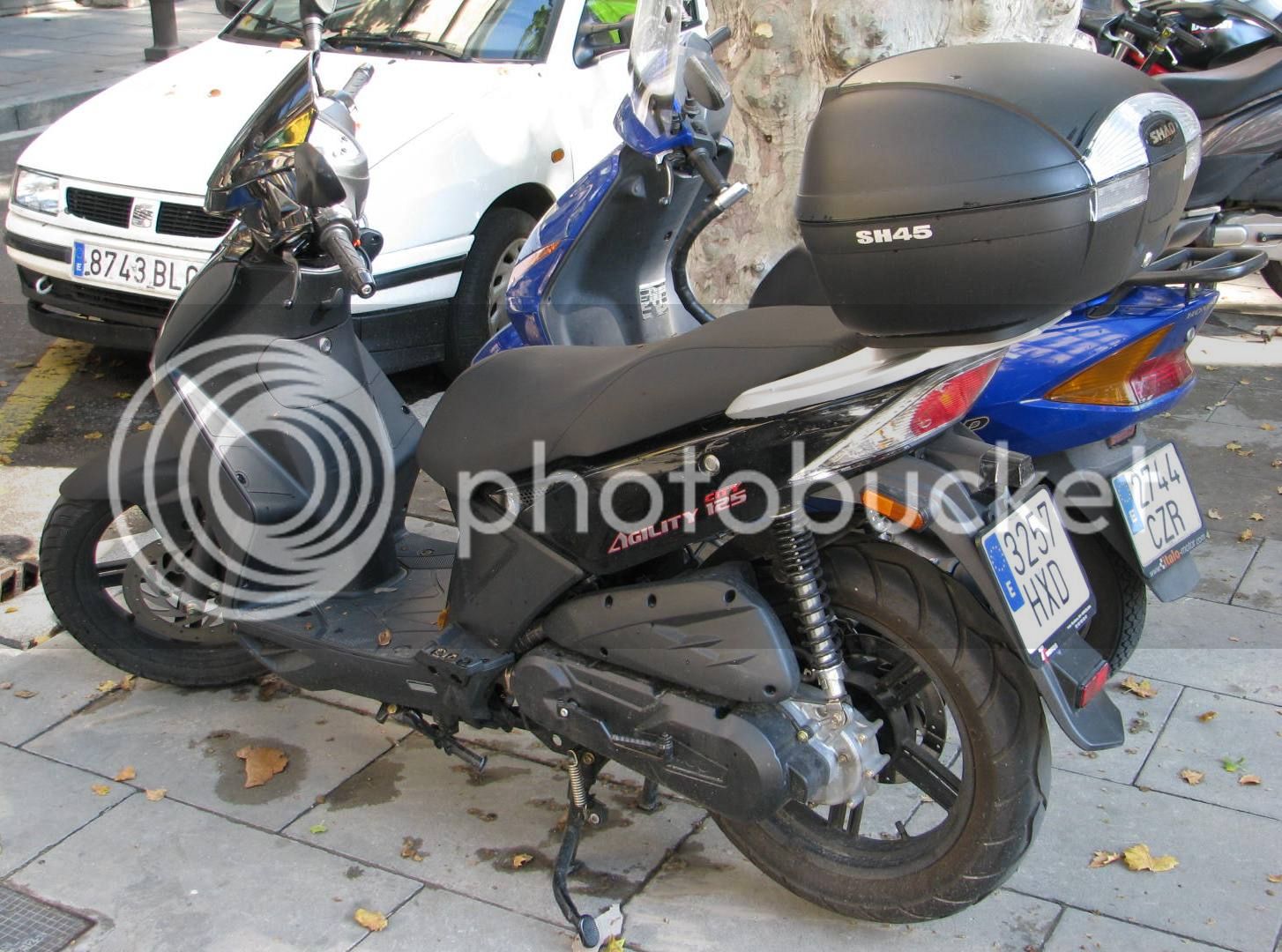
In Aix, France, the owner of this gorgeous BMW was not too happy I was taking photographs of it.
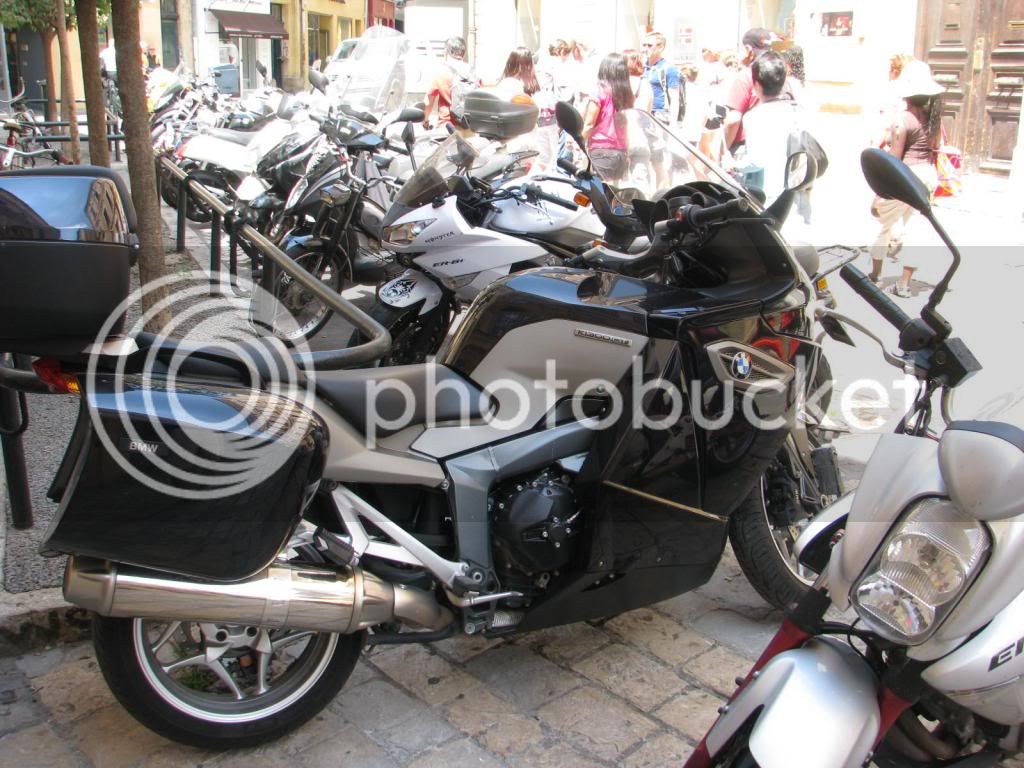
This GSX750 was love at first site for Pants.
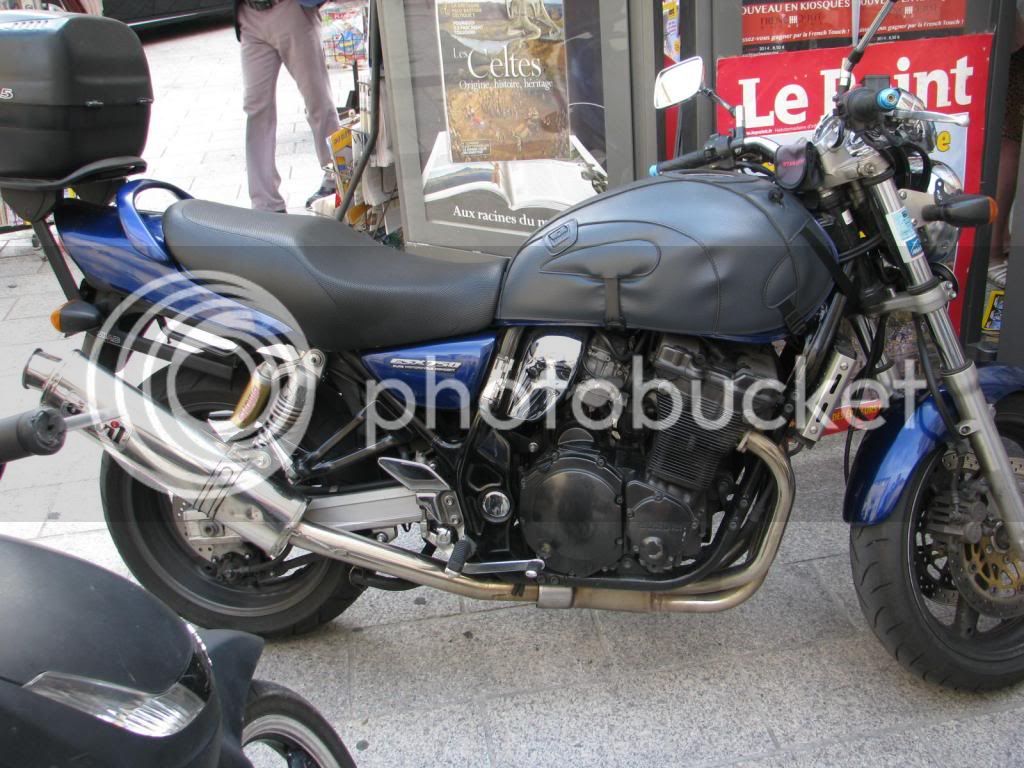
Also, the Honda Hornet (the smaller one) was pretty popular in Italy.

Many of the scooters have this “skirt” system strapped to go over the riders legs, presumably to keep them dryer during rain storms.
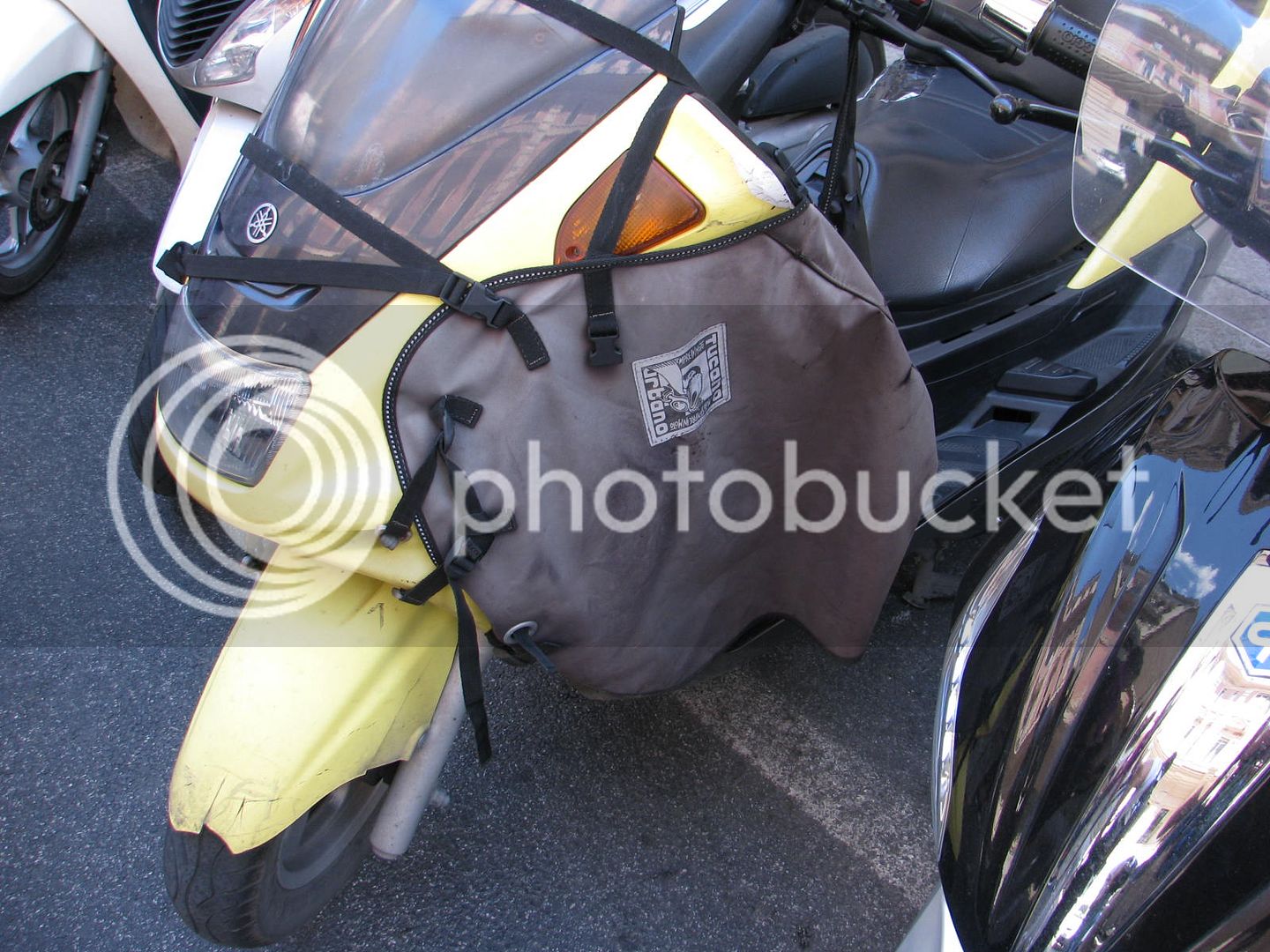
Finally, many bicycles are set up this way for toting babies, or a bag of groceries. Not going too fast with that big wind screen, though.
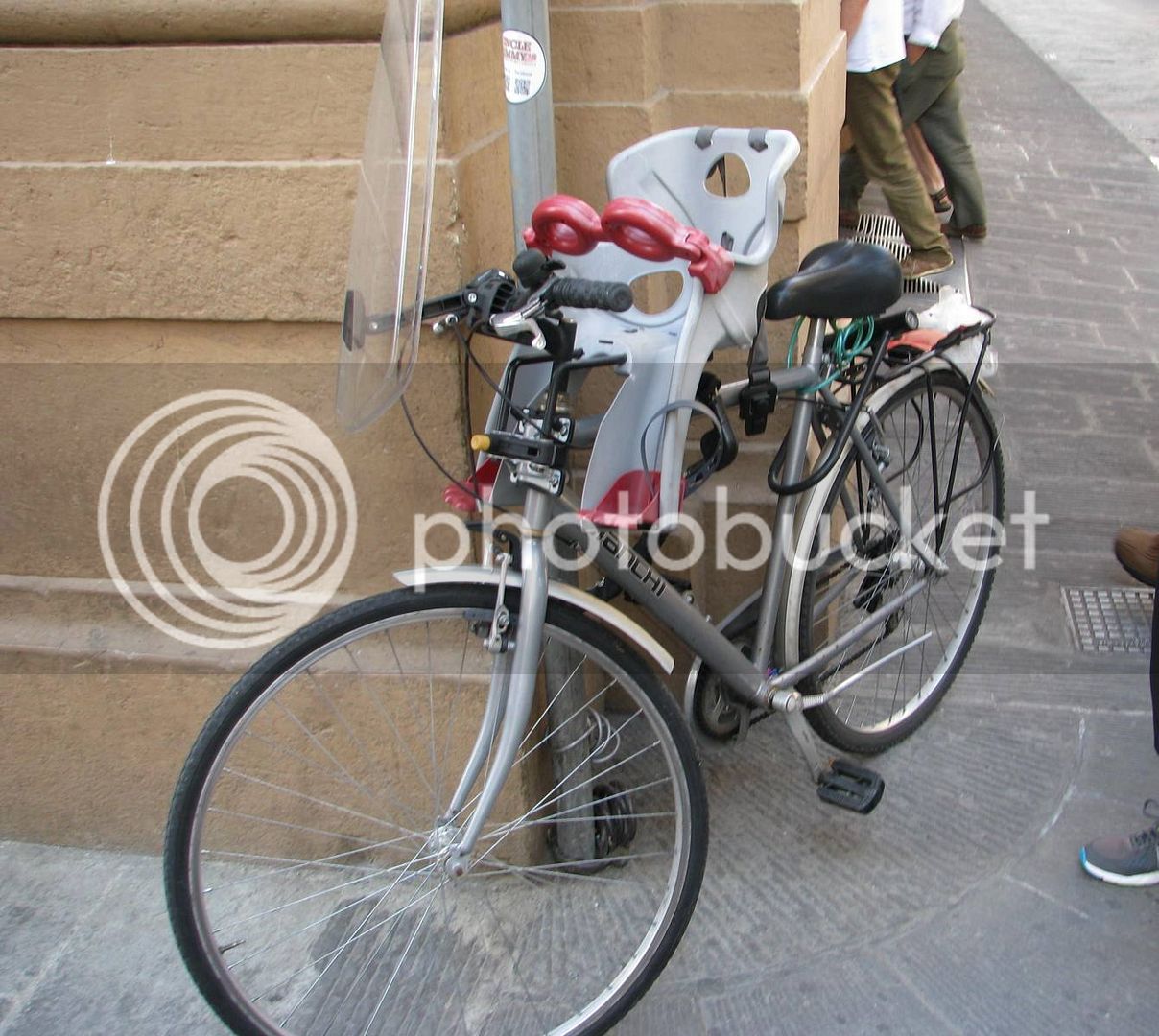
Although I thought about it, I didn’t rent a bike while I was there. My family would have objected to the time away. Besides – the traffic was very heavy in the big cities and I would have been pretty nervous without all of my gear. But there will be a next time and I’ll think about it more then.
Motorcycles in Europe are a world different from the United States. Fuel is EXTREMELY expensive. Converted to American dollars, gasoline varied in price from a low of about $7.00 per gallon in Barcelona to a high of almost $11.00 per gallon in the South of Italy. Because of this, small bikes (less than 500 cc) are much more prevalent and scooters are hugely popular. The vast majority of the bikes have some kind of wind screen and a hard top box installed. 2-up riding is as normal as solo-riding. All of the places I visited have helmet laws, but otherwise, like the States, the vast majority of the riders don’t wear any other protective gear.
Overwhelmingly, most bikes are Japanese. Ironically, perhaps only 2-3 percent were Italian (of those mostly Ducati) or English (all Triumph) bikes. There were a few Chinese and Korean scooters, and I saw only 3 Harley Davidsons the entire trip – each one was being saddled by a Pirate, presumably playing the part.
Couple of other “traffic” observations - First, everyone uses turn signals religiously. Overall, both bikers and cages seem to accelerate and brake a bit harder than we do. Not surprisingly, the French tend to ride/drive a bit slower. Equally predictably, ALL Italians regard the speed limit as a mere suggestion. Europeans use painted road markings more effectively – these are easier to spot and read than a sign lost on the side of the road.
Regardless, there are similarities between us. I had an opportunity to talk with several European bikers and they were just as eager to learn about my experiences as I was there’s. Most of them are full timers – using the bike for commuting and as primary transportation. But the love of riding is still there – and I know that our brotherhood (and sisterhood) is world wide.
Lane splitting on a motorcycle is lawful everywhere in Europe and observing it from a distance gave me quite a pucker at times. Bikers over there are zipping in and out of traffic, taking huge chances that 4-wheeled motorists will see them and yield when necessary. Funny thing is – it clearly works. I never saw 1 motor vehicle accident the whole time. 4-wheeled motorists seem to respect the bikers and actively look for them in all driving situations.
I took a few pictures to share with you.
Once again, any bike over 500 cc in Spain is extremely rare (perhaps less than 2%), but when one is found, it’s usually a BMW adventure bike.

In Italy, larger bikes are more prevalent. The aftermarket cans on this Duc’ sounded heavenly – I heard him coming from 3 blocks away and I suspect that he wants it that way.

However, this has got to be the overwhelming favorite – a simple 125cc scooter with a small wind screen and a top box for utility. Note the handlebar lock – when you unlock it from the handlebars, it simply folds over under the seat. I thought that was interesting.

The Universal Japanese Motorcycle (UJM) is still very much alive and well in Europe. I found a pair of Yamaha Fazer’s in a square in Florence. It would appear that Yamaha has re-incarnated the Fazar name from the 80’s – USA line up.
600 cc, nice “bandit-like” ½ fairing, frame sliders, top box, a beautiful motorcycle. The blue one looks to be the same color as my ’05 FJR.


Stock exhaust runs under the seat on these.

I found this GS in Rome while eating my lunch. The top box is home made and the owner was rightfully very proud of his workmanship.

He turned his nose up on the Aprilla sitting next to him. I politely stayed neutral on the issue.

IIRC, the side of the engine on this Honda said “636 cc”, but I can’t determine if the engine comes from a Shadow cruiser, something else, or is purpose built for this bike.

Loads of Honda CB250s throughout the big cities.

A well maintained Honda CB400 Four – that header is very rare.

45 liter top box on this little scooter – that’s a lot of groceries!

In Aix, France, the owner of this gorgeous BMW was not too happy I was taking photographs of it.

This GSX750 was love at first site for Pants.

Also, the Honda Hornet (the smaller one) was pretty popular in Italy.

Many of the scooters have this “skirt” system strapped to go over the riders legs, presumably to keep them dryer during rain storms.

Finally, many bicycles are set up this way for toting babies, or a bag of groceries. Not going too fast with that big wind screen, though.

Although I thought about it, I didn’t rent a bike while I was there. My family would have objected to the time away. Besides – the traffic was very heavy in the big cities and I would have been pretty nervous without all of my gear. But there will be a next time and I’ll think about it more then.





















































